Capital investment financing strategies



 BY MATT POE, EDITOR
BY MATT POE, EDITOR
The United States, and the world, have faced many challenges over the past few years, which have led to some unprecedented economic difficulties. Fortunately, there has been some recovery from the pandemic-induced financial challenges. However, there are still challenges to be faced.
In its forecast The Budget and Economic Outlook: 2023 to 2033 (February 2023), the Congressional Budget Office says:


• Economic output (gross domestic product, or GDP) is projected to stop growing early this year in response to last year’s sharp rise in interest rates. Output is projected to start growing again during the second half of 2023 as falling inflation allows the Federal Reserve to reduce interest rates, causing rebounds in sectors of the economy that are sensitive to interest rates.
• Inflation was higher in 2021 and 2022 than in any other years of the previous four decades: 5.7% and 5.5%, respectively, as measured by the price index for personal consumption expenditures. The annual growth of that price index is projected to remain above the Federal Reserve’s long-term goal of 2% through 2024 and then fall near to that goal by 2026.
• Interest rates on Treasury securities are projected to rise further in early 2023 and then gradually fall beginning in late 2023.
• The unemployment rate is projected to increase from 3.6% at the end of last year to 5.1% at the end of 2023 before gradually declining to 4.5% by the end of 2027.
These challenging factors mean that laundry and linen services need to be strategic and cautious when it comes to making capital investments in the near future.
RECENT FINANCING HISTORY
Supply-chain constraints, increasing rates and economic uncertainty have been top of mind for laundry operations the past few years, and these factors have affected laundry equipment financing/ funding.
“Laundry project management has been crucial over the last few years,” says Jennifer Whitney, vice president of busi-
ness development for Eastern Funding in New York. ”Equipment manufacturers and distributors had increased lead times, construction resources were more limited and more expensive, and interest rates increased multiple times.
“Each of these factors alone would be challenging but possible to resolve quickly. With all of them happening at the same time, it created a perfect storm, which required all parties to ramp up communication, manage timelines and problemsolve if costs increased. It was truly a team effort to coordinate the completion of the project with the customer.”
Joe Lamping, inside sales representative for Milnor Capital in St. Louis, says the main way he saw financing affected over the past three years was by an increase in deferments and deal-making.
“It would be on a case-by-case basis for whatever the customer believed that they needed to be able to get through everything,” he shares.
Customers could ask for deferments from three to six months, and sometimes the company ran deferment promotions. Lamping says the main promotion was a three-month deferment.
“These would be like little three-month payments of $50 or $100 followed by 60 at whatever the normal payment would be,” he says.
Interest rates were also affected the past few years, running lower, Lamping says. But now rates are rising, and financing companies’ rates are rising as well.
“Nothing too drastic, but it’s definitely an adjustment,” he points out.
“We are seeing solid demand for financing so far in 2023, as industry consolida-


Monarch Brands joins Hospeco Brands Group
CLEVELAND — Hospeco Brands
Group, a manufacturer of personal care, cleaning and protection products to serve the janitorial, industrial supply, automotive, foodservice, healthcare and hospitality markets, reports it is merging with Monarch Brands, wholesalers and manufacturers of microfiber, commercial laundry linen, institutional textiles and wiping products.

Established in 1947, Monarch Brands is headquartered in Philadelphia and delivers high-quality and value-priced textiles from manufacturers located in 10 nations around the world in Asia, Europe and Central America.
Monarch Brands’ products serve diverse markets, including environmental services, hospitality, institutional, food service, industrial and janitorial/sanitation, with deep penetration in the whole of North America.
Unlike other Hospeco Brands Group brands, Monarch Brands has a solid retail presence with trademarked lines, from opening price points to luxury textiles, in the Americas and around the world. The move adds complementary product lines to Hospeco Brands Group, with some strategic overlap that further deepens the microfiber and wiping product offering. It also creates opportunities for mutual growth as both entities gain new products to offer existing customers.
The Newspaper of Record for Laundry & Linen Management May 2023 • Volume 49, Number 05 www.americanlaundrynews.com
After the past few years, what do laundry operators need to consider when financing equipment purchases?
(Photo: © Jan Pietruszka/Depositphotos)
See Finance on Page 6 LATE NEWS
ALM’s 2023 conference makes IMPACT in South Carolina
Attendance exceeds pre-pandemic levels; participants upbeat
RICHMOND, Ky. — The Association for Linen Management (ALM) reports that it sold out its 2023 IMPACT Conference, held March 13-15 in Charleston, South Carolina, exceeding pre-pandemic attendance levels.
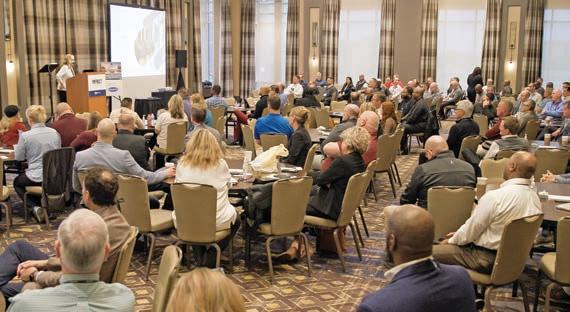
The association says the rapid event recovery reflects the conference’s reputation for high-level education in an intimate environment, which is ripe with opportunities for business development, problemsolving and strategic thinking.

“The energy and enthusiasm of attendees was off the charts,” shares James Mangini, ALM Board president and senior director of supply chain logistics for MaineHealth.
“The amount of networking that took place, business being conducted, and minds being challenged and enlightened with actionable
takeaways from the educational programming was phenomenal.”
Featured presenters at the conference included Jerry Holl, author of the three-time international award-winning book, Downhills Don’t Come Free; Dan Lundergan, MHA, CEO of University of Utah Health, Hospitals and Clinics; and Jay Juffre, executive vice president of ImageFIRST.
This year’s conference premiered a new business-to-business forum, IMPACTful Connections, featuring one-on-one meetings between allied trades professionals and laundry and linen operators.
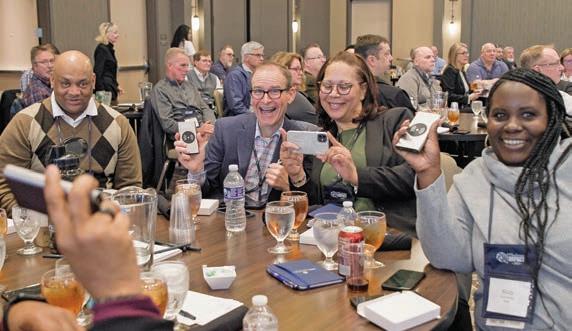
ALM says participants raved about the opportunity to learn about products and services.
“We’re always looking for new innovations and open to looking at new equipment in the laundry,”
says Paul Jewison, president of Textile Care Services in Rochester, Minnesota. “Our company was able to meet with 11 companies representing equipment, textiles and laundry bags.
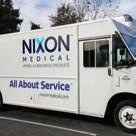
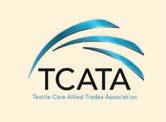
“This was an efficient way to learn about a lot of new products and technology in a short period of time. We’ll definitely participate next year.”
Working to make the new IMPACTful Connections beneficial for both the operators and the vendors was a key focus for ALM staff in planning the new event, according to the association.
The success of that effort was seen by the comments from those who exhibited as well.
“ALM’s foresight to create meaningful ways to connect with our customers, such as IMPACTful Connections, is why our organization chooses to participate as a toptier sponsor,” shares Nicole Grubich,
vice president U.S.-business unit, MIP Inc.
MIP returned for the sixth time as an exclusive sponsor of IMPACT’s most popular evening event, which was held at Charleston’s highest rooftop venue, The Pour Taproom.
During the event, attendees and ALM’s Board and staff bid their final farewells to retiring executive director, Linda Fairbanks, who was honored with a champagne toast and poignant speeches from long-time colleagues.
“We’re already strategizing for an even bigger conference in 2024!” says Sarah Brobeck, ALM’s executive director. “This is just the beginning of many great things to come for ALM and its members.
“We’re also working on new avenues to continue providing valuable resources and innovative ways for members to connect throughout the year.”

Publisher Charles Thompson
Phone: 312-361-1680
E-Mail: cthompson@ ATMags.com
Associate Publisher/ National Sales Director

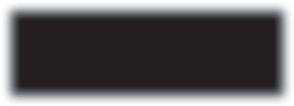
Donald Feinstein
Phone: 312-361-1682
E-Mail: dfeinstein@ ATMags.com
Editorial Director Bruce Beggs
Phone: 312-361-1683
E-Mail: bbeggs@ ATMags.com

Editor Matt Poe
Phone: 866-942-5694
E-Mail: mpoe@ ATMags.com
Production Manager Mathew Pawlak
Digital Media Director Nathan Frerichs
Phone: 312-361-1681
E-Mail: nfrerichs@ ATMags.com
Advisory Board David Barbe
Janice Ayers Davis • Nick Fertig
Deana Griffin • Cecil Lee Edward McCauley Jim Slatcher
Main Phone: 312-361-1700
Fax: 312-361-1685
Subscriptions 847-504-8175 ALN@Omeda.com
www.americanlaundrynews.com
not necessarily reflect the views of American Laundry News or its staff. While precautions have been taken to ensure the accuracy of the magazine’s contents at time of publication, neither the editors, publishers nor its agents can accept responsibility for damages or injury which may arise therefrom.
2
ALM’s 2023 IMPACT Conference was packed with attendees from all over the globe who came together to hear and learn from industry experts. (Photos: ALM)
May 2023 | American Laundry News www.americanlaundrynews.com
American Laundry News (ISSN 1091-9201) is published monthly. Subscription prices, payment in advance: U.S. 1 year $50.00; 2 years $100.00. Single copies: U.S. $10.00. Published by American Trade Magazines LLC, 650 West Lake Street, Suite 320, Chicago, IL 60661. Periodicals postage paid at Chicago, IL, and at additional mailing offices. POSTMASTER, Send changes of address and form 3579 to American Laundry News Subscription Dept., 125 Schelter Rd., #350, Lincolnshire, IL 60069-3666. Volume 49, number 5. Editorial, executive and advertising offices are at 650 West Lake Street, Suite 320, Chicago, IL 60661. Charles Thompson, President and Publisher. American Laundry News is distributed selectively to qualified laundry and linen management and distributors in the United States. © Copyright AMERICAN TRADE MAGAZINES LLC, 2023. Printed in U.S.A. No part of this publication may be transmitted or reproduced in any form, electronic or mechanical, without written permission from the publisher or his representative. American Laundry News does not endorse, recommend or guarantee any article, product, service or information found within. Opinions expressed are those of the writers and do
MEMBERSHIPS
01 Capital Investment Financing Strategies A er the past few years, what do laundry operators need to consider when nancing equipment purchases? 04 Summertime Fire Season Escalation, Prevention Columnist-at-Large Tommy Cocanougher shares ways to keep the heat from increasing re risk 04 Nixon Medical Opens Central Florida Facility Service provider of medical apparel and linens serving outpatient centers opening comes one year a er expansion into Texas 04 Most Popular 08 Full-time Job: Monitoring Labor Law Changes Examining employment law changes over the past few years, the e ect of the changes, and the importance of being vigilant 12 Questions About Healthcare Laundry Handling Experts answer quality-control inquiries from infection preventionists 14 Talking to Customers About Rate Increases In this issue, the Panel of Experts share ways to deal with necessary price hikes 16 Purchasing Pre-owned Equipment with Confidence Questions to ask when buying “as is,” third-party rebuilt or OEM rebuilt 18 Career Track 18 TRSA Hosts 13th Annual Legislative Conference in D.C. Members head to Capitol Hill to advocate for increased safety and a stronger healthcare supply chain 19 Classified Advertising 20 Source Directory 23 Trade Ticker 23 Calendar of Events INSIDE:
ALM’s 2023 IMPACT Conference attendees enjoyed giveaways from speakers and sponsors.
Milnor has a better solution through dilution.
When Milnor introduced PulseFlow® technology, CBW® washing was thrust into the future. The idea of balancing time, temperature, mechanical action and chemistry was missing one critical piece of the pie – DILUTION through the efficient use of water.
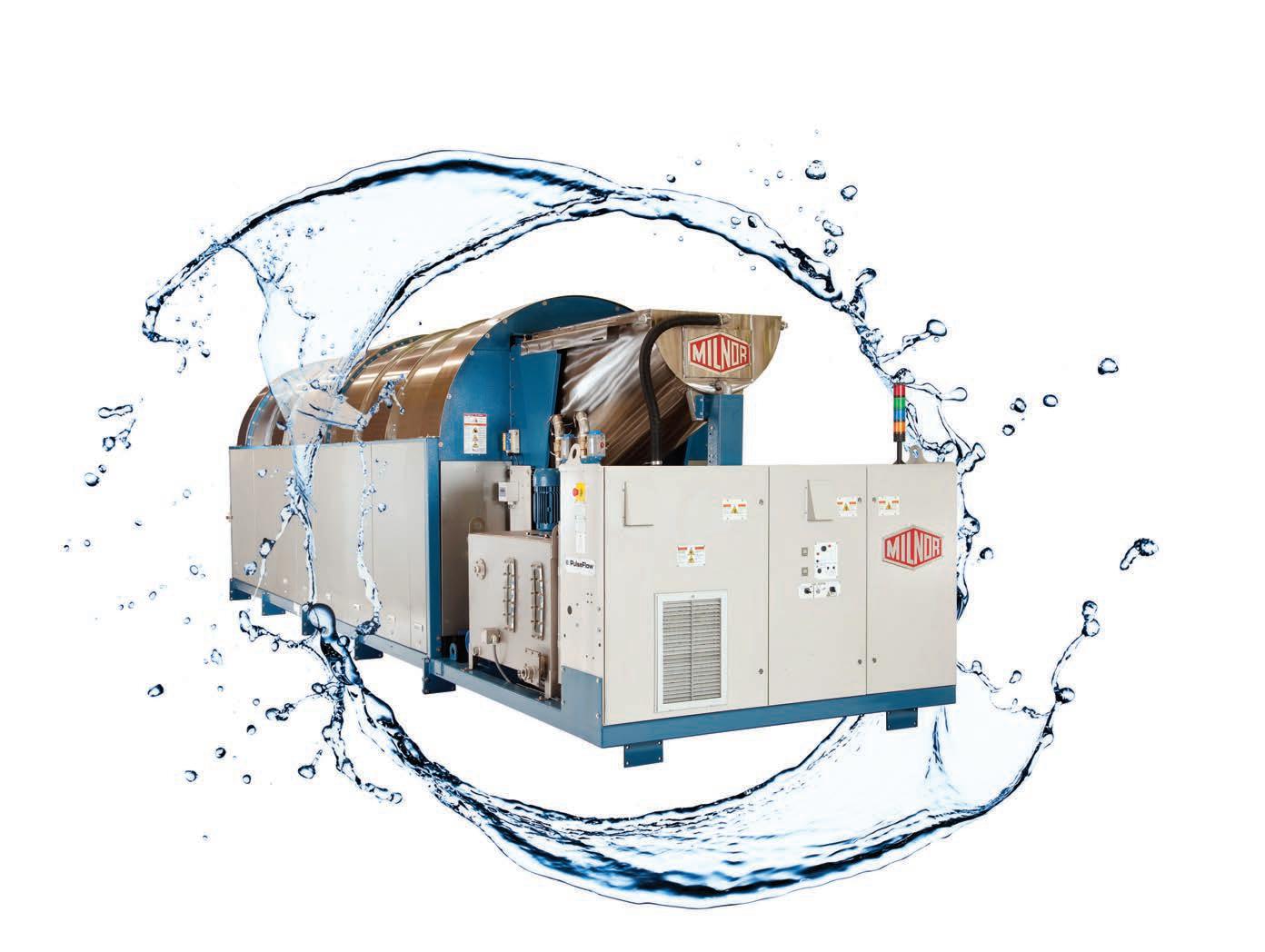
PulseFlow combines the innovative RecircONE® fast wet down and chemical immersion in the first module with standing bath washing in every spacious process module. Thorough and efficient dilution occurs by way of intermittent high velocity counterflow rinsing and traditional True Top Transfer.
The result is hygienically clean linen using less water (as low as 0.3 gallons per pound/2.5 liters per kilogram) and less energy as proven time and again by hundreds of PulseFlow tunnels in a variety of laundry applications worldwide.
Contact an authorized Milnor distributor or call 504-712-7656 to find out more.
www.milnor.com
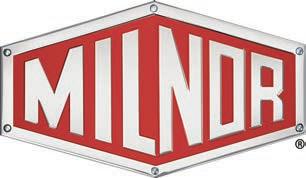
*PulseFlow®, CBW® and RecircONE® are Pellerin Milnor’s registered trademarks.
Future investment
Life and business are funny things. We have to be in the moment while recalling past lessons … and looking toward the future.
The laundry and linen services industry is still sorting through the chaos of the past few years to make sense of lessons learned and to try to apply them to future business.
One area of business affected is financing.
Financing and funding capital investments for laundry equipment underwent changes, and some of those changes are still in effect—and might affect how financing is done for the foreseeable future.
I spoke with several laundry finance sources to discover how financing has changed and potential future strategies to use. This issue’s cover story shares what they had to say.
Employment and labor were also affected during the past few years—and that includes labor law.

Two laundry operators shared their experiences with labor/employment law changes (page 8), along with ways to keep up with changes in these laws on federal, state and local levels.
The U.S. Department of Labor also shared resources to help laundries stay in compliance with changing labor laws.
Besides the two features, this issue offers other articles that provide information for daily and future operation.
On page 12, you’ll find highlights of the Association for Linen Management’s Infection Prevention Forum at The Clean Show last summer. Infection preventionists posed questions that association members answered.
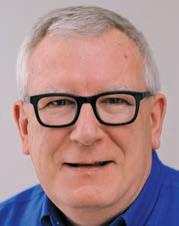
Then on page 16, you’ll find advice about looking into pre-owned equipment.
I hope the features, along with other articles and departments, will help you keep it clean today and into the future!
Nixon Medical opens Central Florida facility
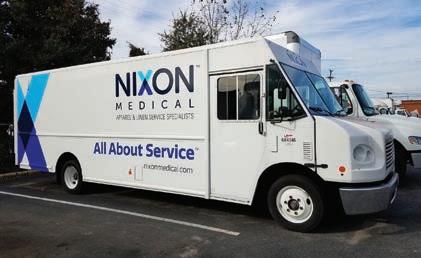
and inventory management services.
“Bringing our service difference to Florida has been a goal for many years, and we’re so pleased to finally establish ourselves in Central Florida,” says Jason Berstein, president of Nixon Medical.
“The population in this area is growing at a significant rate, and expanding our footprint will ensure that its healthcare centers and systems have access to trusted medical apparel and linen service.”
Summertime fire season escalation, prevention
Summer and the hotter ambient temperatures it brings is quickly headed our way. Some Southern locations are seeing temps into the 80s already. It won’t be long before most of us see the 90s, with higher temps scattered across the continent.
That brings a higher risk of fires in our business.
While fires in laundry can occur anytime— whether clean or soiled—the higher ambient temps of summer exacerbate the risk, one you can abate with prudent processes, procedures and a high level of diligence among your team.
Spontaneous combustion fires can occur in winter, as they are caused by the reaction or accumulation of reactive products or chemicals. This reaction may create heat to a level that causes the fabric to smolder and then burn.
With the higher temps of summer, the smolder gets a head start due to ambient heat, thus leading to an unexpected fire situation that can ruin your business.
Let’s review a few of the practices and processes that can help you prevent a fire:
Know what your customers are giving you back. Require your route employees to know what they are bringing back to your plant. This is important from a fire prevention perspective and a safety angle—you need to know what you’re handling.
Waxes, polishes, certain dyes and cleaners, linseed oil, and varnish— all can lead to fire no matter the time of year. They are often highly reactive with one another when they meet up in the soil bag and may not thoroughly wash out leading to a potential fire in a dryer or afterward. Implement safe handling processes. Ink towels, towels with highly flammable products such as acetone or naphtha on them, and some of those mentioned above should be transported and stored in sealed-lid containers.
Not only might the “fragrance” during the day’s truck ride pose a hazard to your driver, but also the product is readily exposed to oxygen, one of the three legs of the fire triangle. Cut off the oxygen and your fire hazard will diminish.
NEW CASTLE, Del. — Nixon Medical, a service provider of medical apparel and linens serving outpatient centers, reports it has opened a new facility in Apopka, Florida.

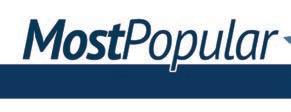
As part of its recent expansion into Southern states, Nixon Medical says it will provide outpatient healthcare centers in Greater Orlando and Tampa, with fully managed HLAC-accredited (Healthcare Laundry Accreditation Council) laundry, product fulfillment,
The opening of the Apopka facility comes just one year after Nixon Medical’s expansion into Texas, adding to its already-established territories in Connecticut, Delaware, Maryland, Massachusetts, New Jersey, New York, Pennsylvania, Rhode Island and Virginia.
For outpatient centers in Greater Orlando and Tampa, Nixon Medical is offering free consultations to share more about its industry-leading service difference, flexible flat-rate payment options, and new LossDamage Protection (LDP) Program, which proactively covers the costs of lost or damaged garments to provide more predictable pricing, greater product availability and seamless inventory management.
Store items of concern properly at your plant. Consider storing items such as bar mops, shop towels and oily rags, floor mops and other similar products away from your building, trucks and any other valuable assets. A minimum of 20 feet should be provided for clearance in the event of a fire. If space allows, provide several areas for smaller batch storage. At least if there is a fire that develops overnight or over a weekend, a smaller quantity of product is lost and your building and trucks are safe. Assure your formulas are correct. Assuming you know what your customers are giving you back, you are then able to build your wash formulas so the product comes out clean. Don’t shortcut your formulas—if the product does not come out clean and then burns later, what have you gained?
Work closely with your wash chemistry team to assure your product is getting consistently clean and is dried/cooled down properly before being placed into a cart for storage and processing.
For clean product, control your temperature. Check your cooldown temps upon exiting the dryer. Typically, products should be cooled to under 120 F. Some products and some markets may need a cool-down to under 100 F.
Check every load in the core with an infrared thermometer and record the temp. As the product sits in a cart for a while before processing, check it again in the core of the load to monitor for temperature stability. Store towel loads in open-sided carts. Open-sided carts allow for airflow and circulation. If heat builds in the load, it can escape, whereas solid-sided carts hold it in.
•
From AmericanDrycleaner.com:
•
From AmericanCoinOp.com:
• 2022-23 State of the Industry Survey
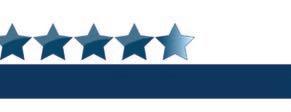
• Fleet Management for Laundry Pickup and Delivery
Training is vitally important. Train your employees, including route drivers and sales reps, about how fires occur, why we can and cannot allow certain products to enter the facility, and what to do in the case of a fire. There is no shortcut to training and education when it comes to fire prevention practices, processes and procedures.
The Bottom Line: Every year we see news reports of laundry fires around the country. But with proper diligence, education, practice, and process control, you can mitigate the danger, protecting your facility and your business.
4 May 2023 | American Laundry News www.americanlaundrynews.com
From The Editor’s Desk
Top Stories Appearing on americanlaundrynews.com for the 30 Days Ending April 15. NEWS • ALM’s 2023 Conference Makes IMPACT in South Carolina • JENSEN Reports Strong Market Position (WE) • Gurtler Acquires OMNI Solutions UV Technology for Tunnel Systems • Cintas Honored with Workplace, Employment Practices Awards (WE) • Nixon Medical Opens Central Florida Facility COLUMNISTS/FEATURES • Questions About Healthcare Laundry Handling • Success=Innovative, Intentional Thinking, Planning
David Griggs: Preparing Plants to Operate in Summer Heat
Human Side of Laundry
WEBSITES
•
•
OUR SISTER
Buying Out the Competition
Building for the Future?
COLUMNIST AT LARGE Tommy Cocanougher
MATT POE
Tommy Cocanougher serves as general manager for Superior Linen Service’s healthcare division based in Oklahoma.
(WE) = WEB EXCLUSIVE
Opening comes one year after expansion into Texas
(Photo: Nixon Medical)


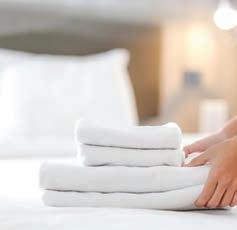

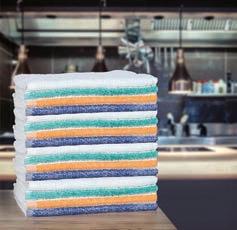

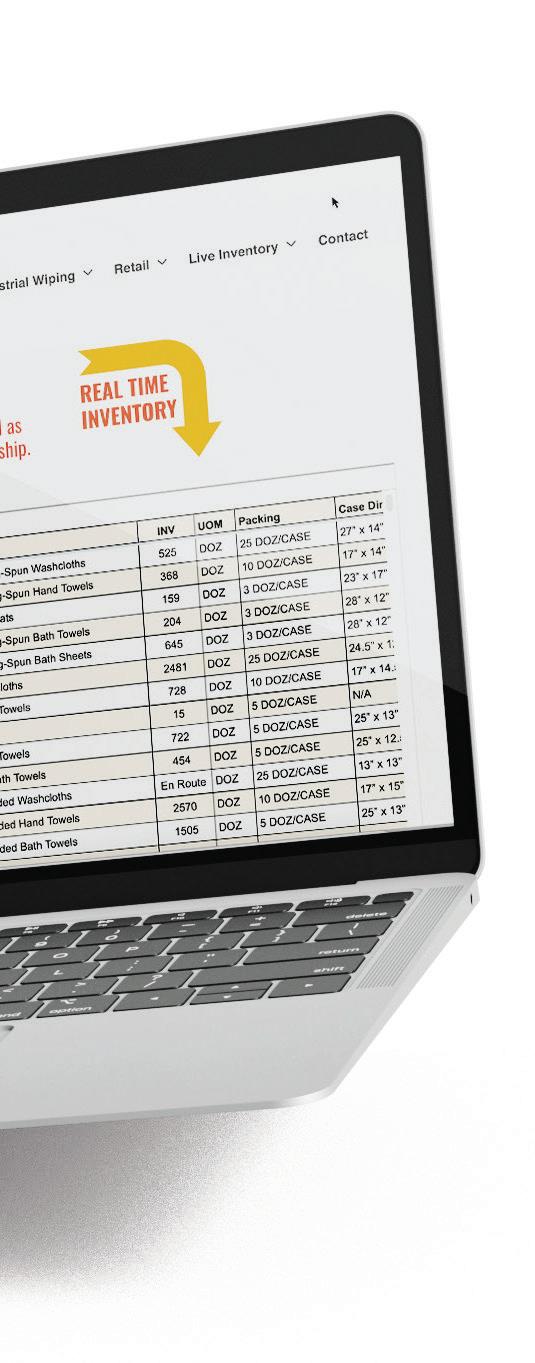
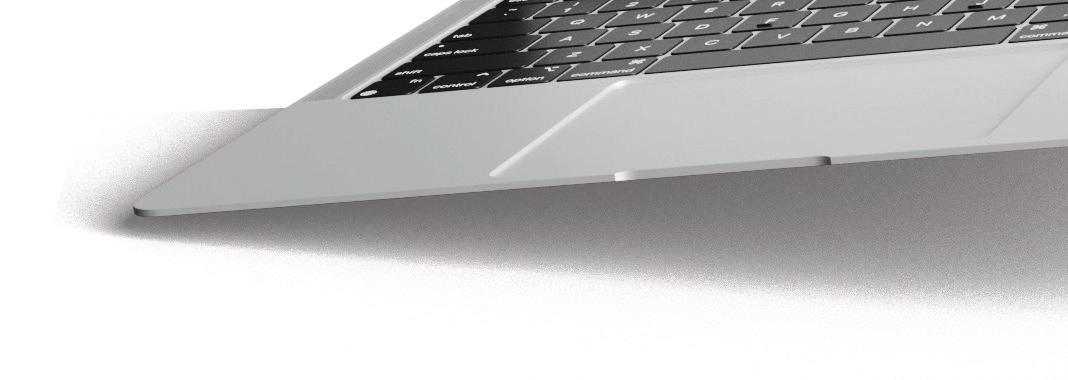







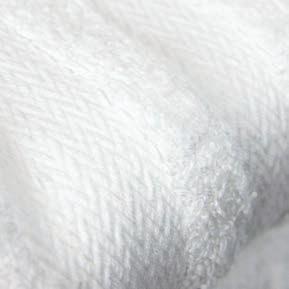

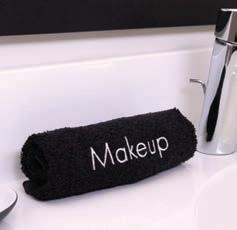
Magellan 17lb Hospitality Towel Foodservice Aprons, Napkins, Table linen (215) 482-6100, scan the QR code, or visit: monarchbrands.com/inventory-tracker Hospitality Towels & Sheets Microfiber Mops & Cloths Bar Mops & Kitchen Towels Scan the QR code to browse real-time textile inventory and know we have what you need before you call. 645 Dozen Need Textile Rental Inventory? Start Here First! Makeup Removal & Bleach-Safe Salon
Finance
tion offers growth opportunities for strong operators,” says Mark Thrasher, president of Lavatec Laundry Technology Inc. in Beacon Falls, Connecticut.
“The COVID-19 pandemic has resulted in a significant drop in the prime rate and inflation has caused a significant increase in the prime rate.”
“COVID was the contributing factor to the downturn in the hospitality market,” shares Tina Gough, senior finance sales specialist for Alliance Laundry Systems in Ripon, Wisconsin. “Since the hospitality market opened back up, it’s been a slow ramp up on occupancy to pre-pandemic levels. They are also having to manage through staffing shortages.
“This, in turn, has caused a decline in revenues and owners reluctant to retool and upgrade their laundry equipment. With regards to the healthcare sector, they have had a shortage of funding, preventing them from making capital investments.
“The bottom line is that in many facilities, across a range of industries, capital expenses have been reduced to the necessities.”
One thing that is holding over from the past few years for Milnor Capital is its promotions.
“We still offer a buck-a-pound promotion,” Lamping shares. “Essentially, the capacity of the washer or dryer is your payment for the first year.
“If you get a little 60-pound washer, then your payment for the first year would be $60 a month. After that, it would be the
remaining payments at X.
“Or, like vacation resorts, they say, ‘I don’t get any business from December through February, what we can do?’ We structure their payments to where it fits best for them, essentially making it to where their December through February payments are like $50 or $100, and then the other nine months a year is a regular full payment to try and help the customer when it comes to cash-flow purposes.”
You don’t want to put yourself in a spot that could easily be avoided.”
“From a laundry lender’s perspective, I believe that there are more financing options available today for laundry operators than there were 10 and 20 years ago,” shares Whitney.
have been minor shifts in focus over the past few years.
“The priorities are efficiency, maximizing throughput and ease of use,” Gough says. “Managers are increasingly looking beyond the upfront ‘price’ and are giving more weight to the overall operating costs—what the new equipment can produce in savings (due to advanced features and technologies) over their useful lives.
CAPITAL INVESTMENT TODAY
“While rates are certainly not as attractive as they were in 2022, there is still a good tax incentive in the form of bonus depreciation,” says Steve Hofmann, vice president of operations for U.S. Capital Corporation in Chicago.
“Bonus depreciation allows businesses to deduct a significant percentage of the price of purchased assets. In 2023, it allows for 80% upfront deductibility of depreciation.”
So, is it a good time for laundry operations to enter financing deals?
“I would definitely say it’s advantageous, especially with the world right now, we learned that you don’t really know what the future holds, so it’s best to hold onto your cash when you can,” Lamping says.
“Even just doing a short-term finance if you want to do a 24-month, obviously interest accrues over time, so if you just want to do a short-term option to try and not pay a lot of interest, it will at least spread your payment out over a certain amount of time.
“That way you don’t have to front all the cash up front and then potentially put yourself in a vulnerable position depending on the economy because we obviously know that it’s not the greatest right now.
“The laundry industry has proven itself to be more resilient, during the most challenging times, and lenders have taken notice. Laundry operators need to find a healthy balance of financing and cash in order to maximize ROI ….

“They need to utilize financing to their advantage for equipment upgrades and reserve cash for intangible items, soft costs or operational emergencies that lenders may not be willing to finance.”
“Costs don’t seem to be going down, so now is as good as any time to invest in more efficient equipment and better technology to keep costs down and maintain overall efficiencies of the laundry room,” observes Gough.
“When savings from improved efficiency is figured in, often the payment can be made through those savings.”
That begs the question of whether laundry and linen services are doing enough business to keep up with financing payments on capital investments in equipment.
“For the most part, yes,” said Hofmann.
“Even in our raising interest rate environment, we have not seen a significant impact in businesses not being able to make their loan payments,” Gough shares.
“During COVID, everybody was calling and saying we need to change, we need deferred payments,” shares Lamping. “We haven’t had that call in a while, so it’s definitely bouncing back.”
While laundry plants continue to purchase the same type of equipment, there
“So, whether it’s washer-extractors or tumblers, managers are looking for efficiency, capacities and equipment mixes to maximize throughput, and controls that are easy to use to simplify training.”
“We are seeing the same types of equipment being financed as usual, certainly with an emphasis on equipment that promotes facilities automation,” Thrasher shares. “In turn, this makes operators less dependent on variable labor.”
“Yes, a lot of customers because the job market right now not a lot of people are looking for jobs, I would say they’re definitely looking at ways to automate,” agrees Lamping. “We actually had one, I think it was last year, where they ended up instead of just having their employees dump their carts of laundry, they wanted a rail system.
“They were more future thinking because they’re having issues with finding employees. They’re like, we need the rail system to make it easier on our employees and where it’s more automated.”
He goes on to say that often the types of equipment laundries are purchasing come down to lead time.
“The lead times are definitely better than they were during late 2020, early ’21, but a lot of times, customers are kind of
Continued from Page 1 See Finance on Page 10
6 May 2023 | American Laundry News www.americanlaundrynews.com
(Photo: © garagestock/Depositphotos)
The Girbau Industrial Compact Pro 5-in-One easily processes your most complicated pieces from fitted sheets to table rounds. Plus, it takes only a single operator to feed, iron, fold, stack and deliver. One operator can feed 240+ sheets per hour! The all-in-one system is also configurable for two lane ironing and folding with delivery options to front, optional rear table, accumulator or stacker.
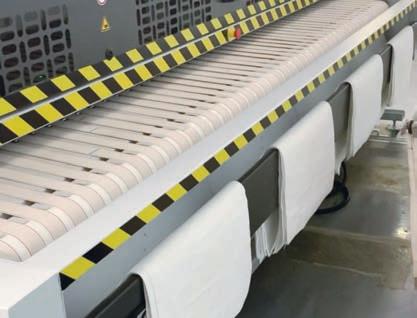
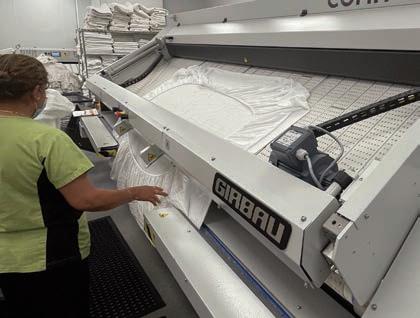
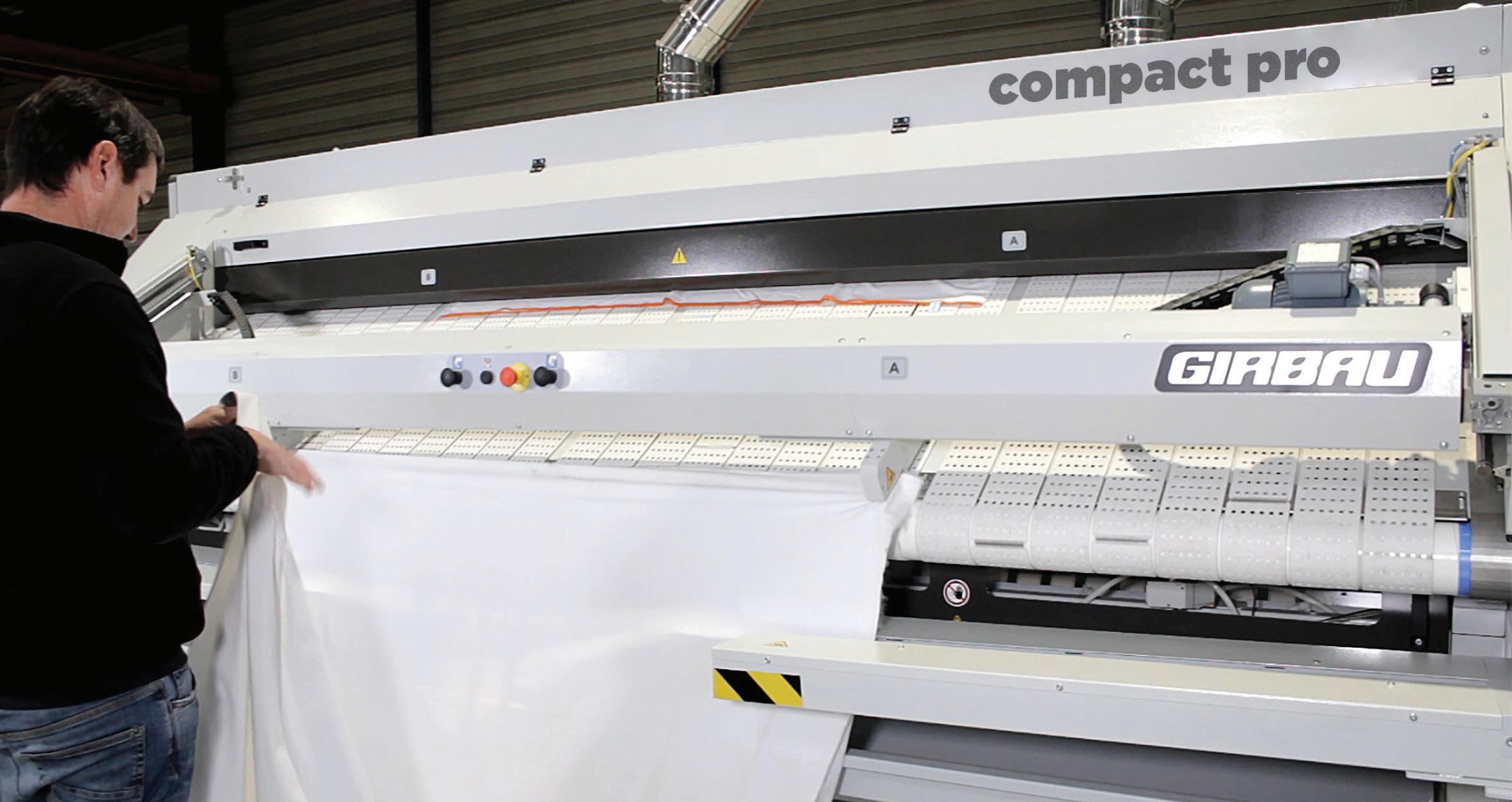
Solve customers’ challenges by fitting their unique needs and expand into new markets with Compact Pro.
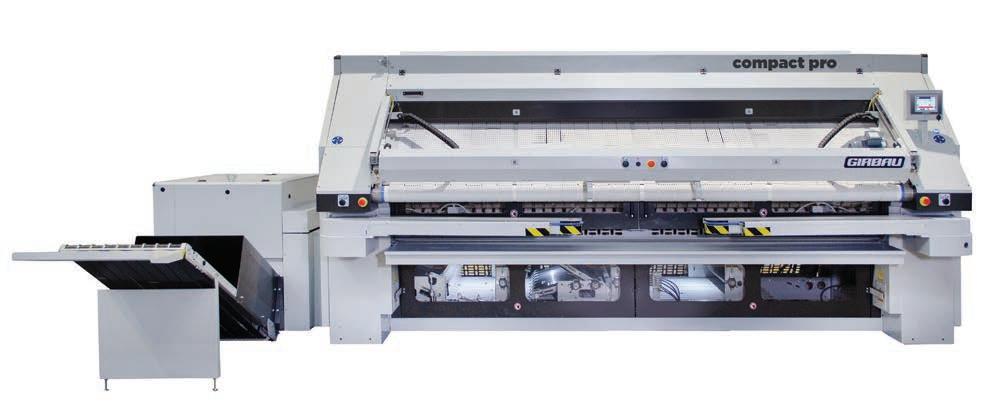
A GIRBAU NORTH AMERICA BRAND girbauindustrial.com
INDUSTRIAL Industry-Leading Factory Warranties and Flexible Financing Options. In stock & ready to ship!
in size. Big on performance. COMPACT PRO
800-256-1073
Small
Full-time job: Monitoring labor law changes
BY MATT POE, EDITOR
Laws focused on employment and labor are meant to make clear the rights of employees and the responsibilities of employers.
However, with labor regulations being made on federal, state and local levels, too often these rights and responsibilities are as clear as mud.
For example, in Texas, the state legislature is trying to take control of labor regulations to end what proponents say has created a mess with confusing local laws.
Those opposed to the effort say it amounts to state overreach.
Patrick Garcia, president of Division Laundry & Cleaners in San Antonio, is very familiar with thechallenges of changing employment laws.
U.S. DEPARTMENT OF LABOR RESOURCES
Occupational Safety and Health Laws and Regulations: https://www. osha.gov/laws-regs
OSHA Employer Help: https://www. osha.gov/employers
OSHA Worker Rights and Protections: https://www.osha.gov/workers
Summary of DOL Major Laws: https:// www.dol.gov/general/aboutdol/ majorlaws

“Our business associations, for example, sued the city of San Antonio for mandating paid sick leave. The state ruled it unconstitutional,” he shares. “Another example was the city allowed four propositions to get on the ballot. Again, the state ruled them unconstitutional.”
As with many things, the events of the past three years have made a mark on labor/employment law and regulations. How has it changed because of the past three years?

“It wasn’t it huge for us,” he says. “There were some in-person meetings that maybe we couldn’t hold, but those are really maybe more tied to the pandemic just as a state of caution for us rather than any pieces of legislation.”
Certain labor laws did come into great focus, however.
“I think primarily around probably wage and hours, and I think the impact there was there were a lot of folks that weren’t coming back to work—not so much from our previous workforce—but we just had a difficult time filling our roles,” Flores shares.
“And so because of that, the people that we did have working for us, there was a lot of overtime. We had to be cautious around just wage and hour pieces. We were working people too much where we were kind of moving up against the maximum hours the folks could work, and so we watched that.
“There was obviously cost involved at that because we were paying premium cost for that time-and-a-half labor.”
“It’s been hard to find people who are willing to work in all areas of employment, not just our industry,” adds Garcia. “We must be more creative in our retention and recruiting efforts.”
Wage and Hour Division (WHD)
Worker Rights page: https://www. dol.gov/agencies/whd/workers
WHD resources for employers: https://www.dol.gov/agencies/ whd/employers
State and local government resources: https://www.dol.gov/agencies/ whd/state/state-local-government-resources
Go to DOL.gov for the most up to date information, tools and news. For questions, call the department at 866-4-USA-DOL (866-487-2365).
How does this affect laundry operators today, and how can they keep track of changes on federal, state and local levels to remain in compliance?
LABOR LAW DURING THE PANDEMIC
Michael Flores, vice president of human resources for Prudential Overall Supply headquartered in Irvine, California, says that his company had different federal and state pieces impact its workplace, but the effect, overall, was negligible.
Of course, many of the regulations laundries had to work with over the past few years centered on hygiene practices.
“During the pandemic, we had to deal with constantly changing best practices with respect to masking, social distancing and vaccinations,” Garcia points out.
“We had our own internal rules and we had comply with, especially at the county level, just some pieces around hygiene, making sure that our janitorial staff was really focused on upkeep around our different locations, to make sure that we were spraying down all the tabletops, especially
8 May 2023 | American Laundry News www.americanlaundrynews.com
Examining employment law changes over the past few years, the effect of the changes and the importance of being vigilant
(Image licensed by Ingram Image)
(Image licensed by Ingram Image)
in the lunch areas,” says Flores.
“Keeping people distanced, which we did, especially early on through the pandemic, really trying to keep groups and different employees further apart. Things like a napkin holder that can normally be home to five folks at a time was reduced to either two or three, depending upon the county and the location.
“Those types of things impacted business, but I would say that those were somewhat negligible. There weren’t really any large material impact for us.”




He says the greatest challenge was keeping up with the local county rules.
“We’ve got 34 different locations, I don’t know what the total number of counties that we operate in, but let’s say it’s around 20, really understanding what those county requirements are,” Flores explains.
“Here in California, when you look at Los Angeles County, Santa Clara County, specifically, those are areas where they were really stringent. And we had to think about federal rulings, state rulings for all the states and we operate in, but probably the most complex were the counties. They were the ones that were probably the most restrictive; they were the ones that had the most changes.”
TRACKING LABOR LAW CHANGES
Flores says that to keep track of all of the employment/labor law changes, Prudential had a safety manager who dedicated a large percentage of his time “just being kind of the other COVID expert.”
“He would not only get the information, but he was really responsible for any of our policy and practice changes as well as our communication responsibilities,” he says.
“If you don’t already have a relationship with a labor and employment law specialist or certified HR consultant, you need to develop one,” adds Garcia.
“One of our trade associations puts on an annual Labor and Employment Law Conference, which provides updates and coverage of ‘hot topics.’ That same trade association also has a government affairs committee that keeps tabs on state and local developments in this area.”
Flores points out, “It’s really more of a monitoring exercise, just going out specifically to different agencies and their websites.
“We centralized all that monitoring with one of our safety managers, so his job was to make sure that we were up to speed on everything, making sure that we were compliant with everything and as we get more relaxed in different jurisdictions, let’s make sure that we’re communicating that also.”



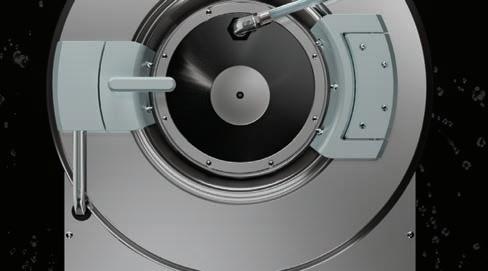
But just because pandemic regulations have eased doesn’t mean laundry operations can
relax their labor/employment law monitoring efforts. Change is a constant when it comes to labor law.
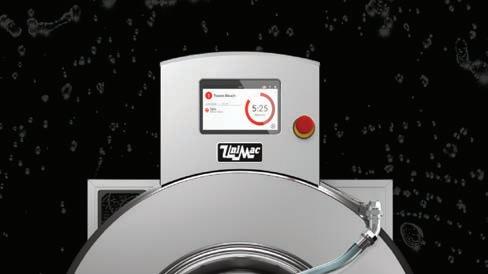
“The so-called Protect the Right to Organize Act (also known as the PRO Act), would essentially re-write the National Labor Relations Act,” Garcia shares.
“For example, under current law, an employer can insist on a secret ballot election conducted by the NLRB to determine if employees want to be unionized. Under the PRO Act, an employer would be forced to recognize the union
and begin bargaining merely by a union organizer presenting an adequate number of signed authorization cards—regardless of what the organizer said or did to get those cards signed.”
INSPECTIONS, ENFORCEMENT
Garcia says that labor law enforcement has changed because the government has been working remotely, even if laundries haven’t.
“This has slowed their investigation and deliberative processes,” he says. “Consequences vary,







depending on the law that has been allegedly violated. Some laws have make-whole remedies, such as reinstatement and back pay. Others also provide for compensatory and punitive damages.
“If the dispute goes to a lawsuit and the employer loses, even part of the claim, the employer also has to pay the employee’s attorney fees in many cases.”
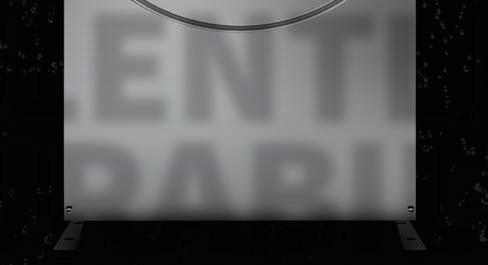

“It was interesting because we have different rules of conduct,” Flores says. “We have company policies and procedures. Any of our areas covered by those documents, this was another one that
if people violated that protocol, if they subjected other employees or themselves to exposure, beyond what was required by law, we would have to take action.
“And so, we have a corrective disciplinary process that we can move them through. They would go from a written warning to a suspension or something like that. Luckily, we really didn’t see much of that. I think people understood kind of what consequences were but beyond just
See Labor on Page 11
9
American Laundry News | May 2023 www.americanlaundrynews.com 46,000 44,000 42,000 40,000 38,000 36,000 48,000 BUILT TO WASH OVER LOADS ADAPT TO FLUCTUATIONS IN LABOR AVAILABILITY MEET ROUND-THECLOCK DEMANDS LOWER UTILITY COSTS Get nonstop performance with equipment that exceeds expectations. Premium UniMac machines meet challenges with ease, giving you the lowest total cost of ownership. 34,000 32,000 RELENTLESS DURABILITY CHOOSE RELENTLESS Count on our industry-leading offers with quick availability. unimac.com/unstoppable
Finance
Continued from Page 6
turning to where they are making their decision on whether they want to get new, used or whatever just based all on lead time at this point,” Lamping points out.
“Because a lot of customers, I feel, are assuming that lead times are back to 100%, we’re good. All these manufacturers have their stuff in stock, right? But that’s not quite the case yet.
“It’s trending in that direction, but it’s not quite there yet. Instead of a 12-week lead time, it’s like a four- to eight-week lead time.”
MOVING FORWARD WITH CAUTION
The key for laundry operators is to be strategic, and cautious, when it comes to financing capital investments.
“While the Federal Reserve should be slowing down its rate increases,” cautions Hofmann, “we recommend to target as long of a fixed-rate term as possible. The prime rate increased from 3.25% to 8.00% over the last year.”

“I would definitely be careful when it comes to the variable rate because a lot of finance arms, they won’t be upfront,” Lamping cautions. “They’ll be like we offer this payment and this rate, and then they won’t tell you it’s a variable rate we offer. The payment could change after the first year just because whatever the economic market is could go up or down. I would say it’s very uncertain.
“Again, you don’t really know what the future holds. We learned that firsthand in 2020. So, it’s best to lock something down where you know exactly what your pay-
ment will be for all 60 months or all 48 or whatever you choose.”
“Operators should take advantage of the financing options available,” Whitney adds. “Do your research and talk to other laundry operators who have a similar project.
“Understand what the lender’s paperwork and cash investment requirements are and do not shy away from a lender who is asking questions to understand your short-term and long-term goals.
“In today’s rising interest rate environment, it would be easy to go with the lowest rate option. But are you getting the value add that you need to meet your long-term goals for your business?
“Laundry operators should be encouraged to seek out a financing partner who understands all aspects of the life cycle of the business.”
“It’s all about the greatest value for the investment,” shares Gough. “We are all tasked with doing more with less lately.
“Upgrading equipment can make a significant difference, particularly in operations where old models are in use and costing more due to inefficiency and repair costs. Something as seemingly simple as a delayed start feature can help managers staggering staff hours to navigate staffing shortages.
“Managers should be cautious in understanding the difference between price and cost. Often the least ‘expensive’ equipment ends up costing the operation more in the long term. Approach upgrades as an investment, and investments must deliver a maximum return.”
“We do not expect rates to go down for the next few years,” Hofmann shares. “We do expect further industry consolidation with strong operators continuing to be successful.”
“Rates are definitely still on the rise,”
Lamping agrees. “Just trying to offset the rate of inflation right now. That’s kind of the only thing that we’re seeing so far is nothing to where anybody is saying we’re heading toward depression or recession.
“It’s kind of just, we’re trying to keep it afloat, just kind of keep on the train that we’re on and without having any really knee-jerk reactions at this point.”
ADVICE FOR THE FUTURE
Hofmann’s top advice for laundry operators looking at financing equipment purchases/upgrades? Target fixed-rate financing as much as possible.
“If you are concerned about the significant investment that many of these purchases or upgrades require, we recommend performing a cost/benefit analysis that includes the cost savings (e.g., utilities) associated with new, more efficient equipment,” he says.
“You should also keep your eyes open in your market. We have seen a number of operators be successful due to their willingness to be opportunistic.”
“The laundry industry continues to innovate when it comes to services offered, technology and equipment efficiency, and improvement in terms of operations and customer service,” Whitney observes.
“Lenders view these improvements favorably and will improve the programs that are needed for the laundry operator to continue to thrive.”
“Manufacturers that have a captive finance arm always will be a resource for financing equipment purchases,” shares Gough. “Depending on the economy, the banking industry may tighten, causing them to require more of a down payment or require more collateral to mitigate their risk.”
Whitney says operators need to main-
tain good financial records and review them monthly/quarterly to understand when and where costs have increased and when they may need to reevaluate their pricing structure.
“If you do not pay attention, you may miss an opportunity to make improvements to your business,” she says. “Do not be afraid to continue to reinvest in your business by maintaining and upgrading equipment, to minimize maintenance/ repair and manage utility costs.”
“Take advantage of new technologies that are coming out,” says Gough. “You cannot improve what you can’t quantify. Laundry manufacturers are integrating new technologies to allow you more indepth information on KPIs to manage resources, costs and improve inefficiencies.
“Look for finance specials to help reduce payments and upfront investment.”
“I would recommend whatever fits their budget the best, whether if you have all this cash up front and you’re thinking about paying cash for it, it’s best to finance it over like a 24-month term,” Lamping shares.
“Even if you are good at a five-year term and you want to be able to pay it off after a certain amount of time, we can work on that as well. Or, if you want deferred months, we’re just getting going with this new laundry facility, because we have all this extra money to spend, we’re opening up a new plant or something, you want to defer months out to try and more align when you open with when your real payment start.
“That’s why I say be strategic. Don’t just enter into financing because it gets you the equipment quicker and it comes with a low payment. I would say be strategic with what you choose to do when it comes to your payment structure.”
10 May 2023 | American Laundry News www.americanlaundrynews.com
(Photo: © Jan Dmitriy Demidovich/Depositphotos)
Labor
Continued from Page 9
kind of the procedural stuff.
“People really understood that this is health related, and they didn’t really want to fool around with health exposure for themselves, for their co-workers, once they got back home for members of their family.
“I know that we had to post certain documents on some of the front doors of our locations. If we didn’t have those posted, and if they came over to do an audit, we would be subject probably to fines or something.
“I can’t remember that we had any audits from any of the counties or state agencies or any of the federal folks either. But I do know that there was always kind of that lingering threat, for lack of a better word, and that it was our responsibility to be prepared for that as needed.”
While the tight restrictions of the pandemic have let up, the effects linger. Flores says there was a question that came up recently about mask availability.
“We have locations in Los Angeles County, and we’re still required to provide a certain level of mask upon employee request,” he shares. “And so, while we kind of thought that all of these COVID restrictions were over, that’s not true.
“We really need to stay on top of those, and so that’s where that safety manager and his diligence to really kind of stay on top of those things comes into play. Because our plants are there to do laundry.”
LABOR LAW EFFECTS FROM THE PAST THREE YEARS
“I will say that there is a silver lining in all of this,” says Flores, “and I think that it really put a spotlight on individual and employee health and well-being and safety.
“You see a lot more diligence around folks washing their hands just before lunch and just after lunch. In our different lunchrooms, you see more spray bottles where people can actually use that to spray down the table before and after lunch.
“You see a lot more cleaning and us being a bit more rigorous and in our cleaning schedules around our plants and locations. I think that all of those are outcomes of workplace rules and regulations that were put in and really designed to not have workplaces be these super spreader locations.”
He says that when laundry operations were deemed essential functions and had to remain open, the state provided the regulations that had to be followed.
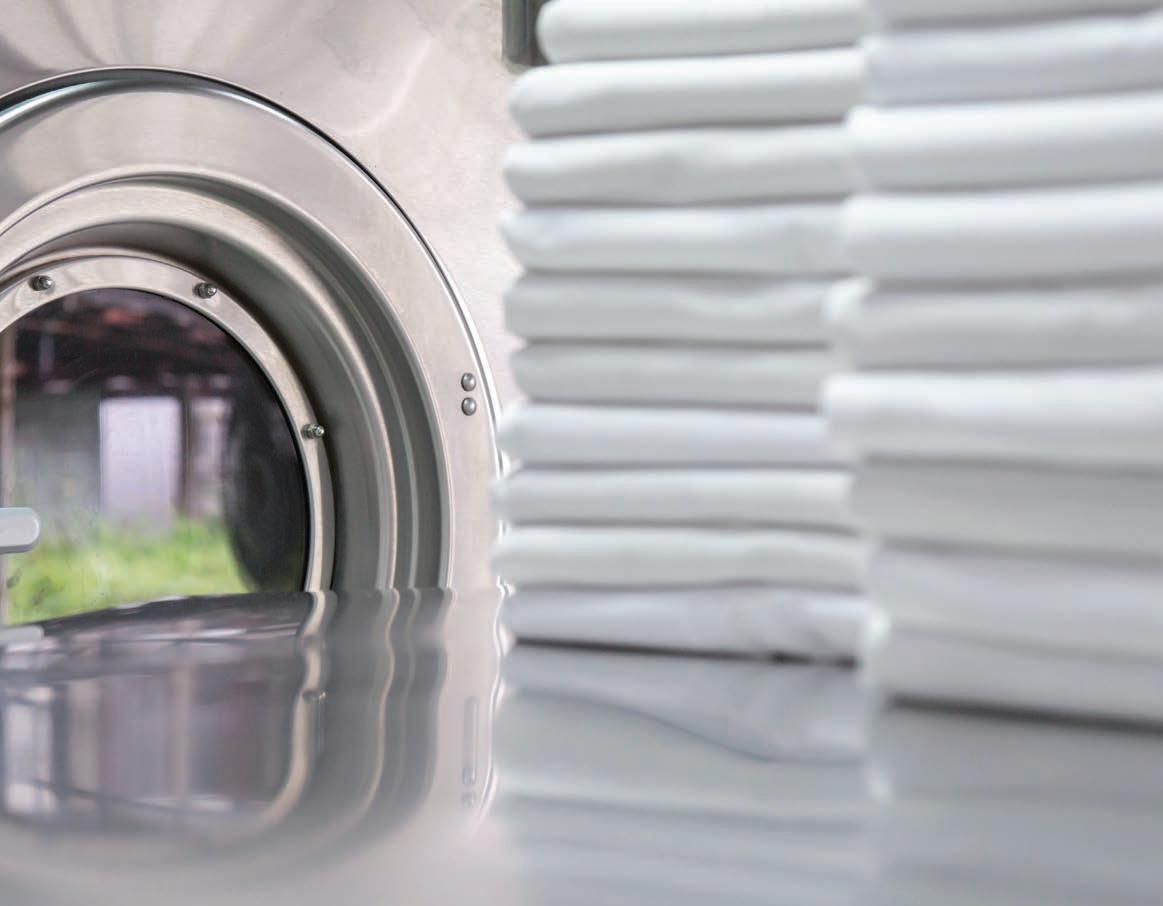
“We did that because that was the law,” Flores says. “But now that the laws have been relaxed, I’m actually pleasantly

surprised to see some of the behavior change at our different operating locations that at least have extended through today. Hopefully, these are habits and behaviors that we will see extended for years.
“So, yes, there were regulations, pieces of legislation, that had us behave differently. We certainly complied with that, and as I said before, I think we picked up some pretty good habits along the way.”
FINAL ADVICE
Flores’s key piece of advice for
laundry operators working to stay current on labor/employment law is to work with an outside entity.
“I would say partner with an outside law firm,” he shares. “We have a couple that we partner with, and we just concluded an HR audit.
“Sometimes we can’t see beyond ourselves, that we get so embedded in our own operation and we just know that we’ve done things successfully. We’re just used to doing things the way that we know how to do them, and our policies, our employee procedures, our documents, they need
a refresh every once in a while.
“While we do our best to keep up with changes in county, state, city and federal laws, we don’t always do the best job because we’re not the experts. And so, we believe that it is worth the investment to partner with an outside firm, generally a law firm, that can really keep up with all of these changes.
“Again, we recently conducted our HR audit took the better part of about eight months, but we’ve cleaned up a number of processes, procedures, and documents, and it’s been a great investment.
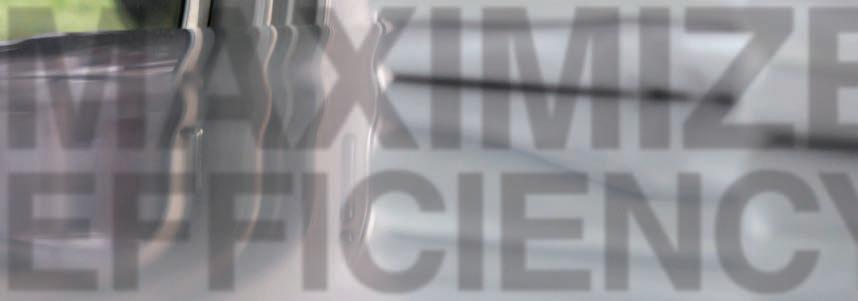
It is not cheap by any stretch, but we believe that the investment is worth it—not only in terms of compliance but really to make sure that we’re doing the right thing for all of our workforces and teams in all of our locations.”
Garcia concludes, “Most of your problems take care of themselves if you treat people with dignity and respect. Nevertheless, conflicts can arise even in the best of operations. “Get yourself aligned with a knowledgeable labor and employment lawyer or HR consultant.”
11
American Laundry News | May 2023 www.americanlaundrynews.com
Questions about healthcare laundry handling
Experts answer quality-control inquiries from infection preventionists, audience during forum
ATLANTA — The Association for Linen Management (ALM) fields many questions received from infection preventionists (IP) regarding the processing and handling of healthcare textiles.
The association posed several of these questions, along with audience queries, to three experts during its Laundry/Infection Prevention Forum at The Clean Show here.
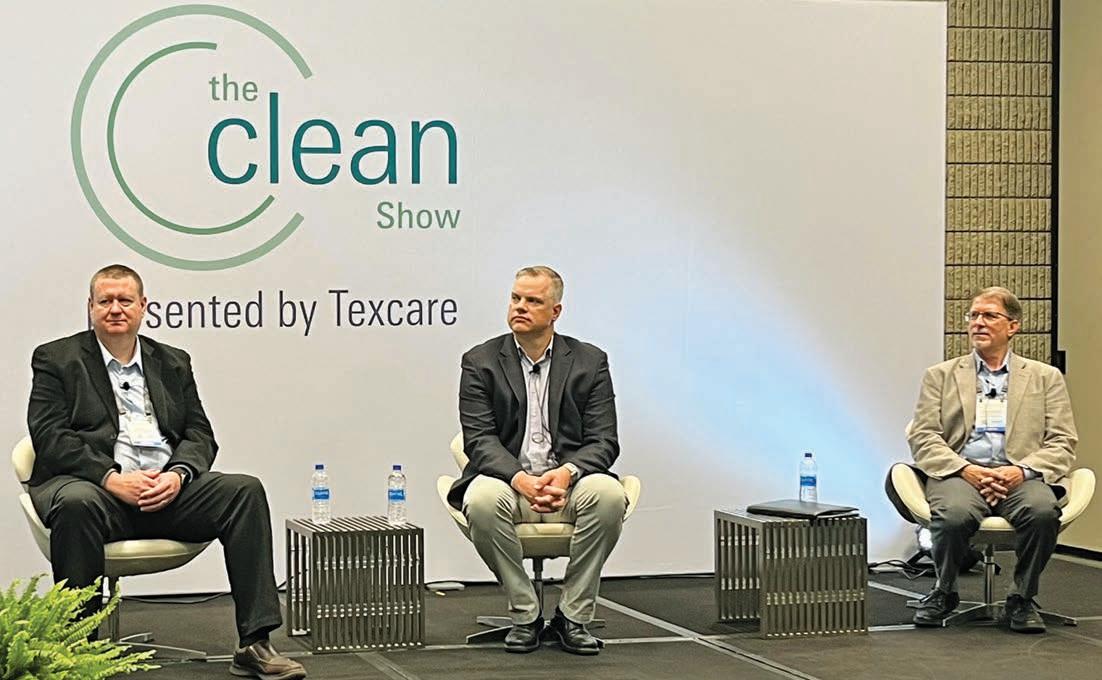
The healthcare laundry experts, who interact with IPs regularly, included Jim Mangini, director of linen services for Maine Medical Center; Jason Hartsell, vice president of operations for United Hospital Services; and Chip Malboeuf vice president of engineering and operations for ImageFIRST.
Former ALM Executive Director Linda Fairbanks moderated the session, and what follows are some of the highlights from the conversation about quality control.
What quality control components are used at a laundry and what data is collected to monitor this?
HARTSELL: This question here has two parts with it, the collection of information and what you do to monitor it. The normal information IP (infection prevention) or IC (infection control) are looking for, in my opinion, would be the standard titration type information, pH, what are you doing to monitor your wash process.
But they may want to know what you’re doing above and beyond that. Are you doing ATP (adenosine triphosphate) monitoring? Are you recording that? Are you doing any other type of quality-control measures looking at your stain, your rewash, that type of thing?
So, they really want to know what you’re looking at, what you’re gathering, and then what KPIs (key performance indicators) you have to maybe trigger something else like additional linen purges, different formulations in your wash process, that type of thing.
They want to see what you do when it is out of normal. So, do you just show them the records that you can that track that data?
HARTSELL: Normally we have what the upper limits are before something triggers a change. If we’re doing testing with our isolation gowns, there’s going to be a trigger at a certain point when we increase the number of samples that we test when we start to see a certain number fail.
I know they look at it because one exam-
ple would be, we sent samples to be tested to a lab and the lab was bought out by another company. The format of the paperwork changed and within a day of that new format going out to the different IC/IPs, they had questions.
So, they do look at it and they are pretty keen if something does go off. But we try to put it on the different reports, and we try to put what our limits are so that it’s clear.
The next question is on quality assurance. How are textiles cleaned to ensure
no contamination remains from patients with infections?
MANGINI: There are a combination of a couple things we do. Obviously, whatever product you’re going to wash, the first thing I do is get the IPs engaged with you that I’ll take the product and see what’s the manufacturer’s recommendation.
But then, secondly, it’s the old WATCH— water, agitation, temperature, chemistry, heat—and then make sure that you’re partnering with your chemical vendors making sure they’re in there engaging, not just coming and checking, here’s a report, and leaving. We’re having discussions. What are you seeing? What are you finding?
Additionally, sending out for the validations, that third-party vendor like Jason discussed, sending out for an independent report and making sure that your spore counts are down. Do you have any biologicals left over, and if you do, what’s the action plan—because they’re going to ask.
We use an outside company. I want to know if laundry services that do hospital laundry are regulated in a way to guarantee acceptable quality.
MALBOEUF: From our standing, we go through healthcare laundry accreditation. Each of our facilities goes through that every three years. Each of our facilities is accredited by HLAC (Healthcare Laundry Accreditation Council).
They’re following Joint Commission and they have certain protocols and tests to ensure that we’re meeting the acceptable quality standards for those processes. Do you process privacy curtains? What does that process look like?
MALBOEUF: This has been a relatively new path for us doing the cubicle curtains, the privacy curtains. We can either remove them for you or the EVS would be respon-
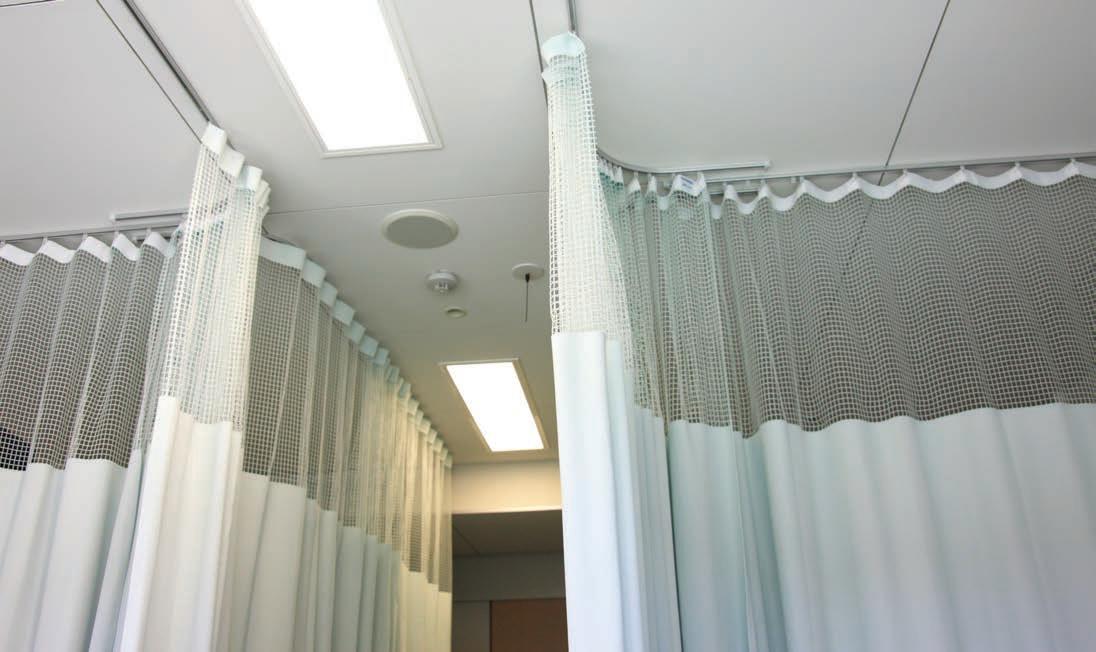
12
Jim Mangini (left) from Maine Medical Center, Jason Hartsell from United Hospital Services and ImageFIRST’s Chip Malboeuf answer questions during the Laundry/Infection Prevention Forum at The Clean Show. (Photo: Matt Poe)
May 2023 | American Laundry News www.americanlaundrynews.com (Image licensed by Ingram Image)
sible for removing them, putting them in a soiled linen bag and then we’ll process them. Then we will return them, and we can put them up or put them in a storage area for the EVS.
Coming up with a method that makes it a little easier to remove and replace has been key for this process for us to figure out, and how we track that. But, yes, we’ll take it back process it, package it and send it back to the clinic.
Validating is one question Joint Commission seems to be honing in on as it relates to laundry and textiles in the hospital.
How do you know when that was last washed? There is no industry standard on how often cubicle curtains should be washed; that’s up to the hospital to decide. But how do you validate for them?
MALBOEUF: In our case, we use RFID technology to track when the customer picks it up, when it goes back to the laundry it’s scanned again and then when it goes ready for delivery it’s scanned there and then it can be scanned back at the particular clinic.

So, we have a history of how many times who’s touched it last or when it was last touched and how many washes, how many cycles it’s gone through. So, we do have that data available.
HARTSELL: We’ve been doing cubicle curtains, privacy curtains, for about 15 years. It started out where it was trying to establish it in the hospitals for their records. There were a couple of iterations and different ways to track it. And we’ve kind of reached a happy spot with the tracking mechanism in place.
We use a barcode versus RFID. In our opinion, it’s a little more reliable than RFIDs, and taking a curtain that is up in the room, we need to be able to have the IP or IC give us a barcode number and have us type it in versus having something that may not be human readable.
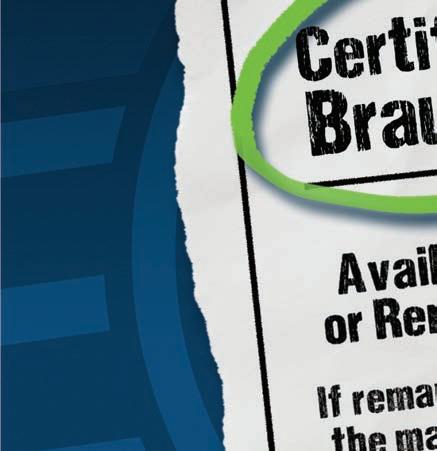

Washing the curtain is straightforward. If they need to know the formula, that type of thing, that’s easy to provide. In the laundry, we prefer a curtain without a mesh on it. The mesh is a disaster, usually. It gets wrapped around your dryer and washer, and it gets ripped really easily. If you can avoid the mesh, all the better.
MANGINI: In our case, we partner with EVS since they’re the ones responsible. We really started seeing this question pop up during COVID, when was the last time your curtains were processed. The clinics were more of the focus than our contagion units.
Are there, to your knowledge, recommended frequencies, obviously if they’re soiled you’re going to change it, but any routine frequencies for curtains?
HARTSELL: I’ve not seen something from what I would consider one of the reference
sources for recommended number of washings.
What I’m seeing from Joint Commission or the state board of health is if you have a policy that it’s this frequency you have your curtains removed and laundered, or if it’s visibly soiled, if you have that policy in your facility, you better be following that policy, just like a lot of things.

MALBOEUF: It’s nothing published. It really comes down to where it’s being used in the facility. How infectious the area is. For us, it’s really up to the hospital itself. IP makes that call.
MANGINI: Another thing about the Joint Commission, one of the things we’ve learned the hard way, let’s put it that way, is that if you have a policy and something is written in the policy, you better be executing it. Sometimes less is a lot better.
I’d encourage anybody with policies to go back and work with your IPs. Joint Commission is going to say your policy states cubicle curtains get changed every six months. How do you know? That’s the road they start to go down.
Why are some linens cleaned,

but an EKG sticker or even leads are stuck to them? Are actual people looking through these linens?

MALBOEUF: Yes, but it’s humans, so mistakes do happen. Our policy is that our associates are trained on our quality standards to inspect each item before they feed it.
Do things get by? Yes. So, if an associate finds these types of things at a feeding machine, we have multiple buckets at the station for stain, rewash, other items, glue, stickers, that go into a stain rewash.
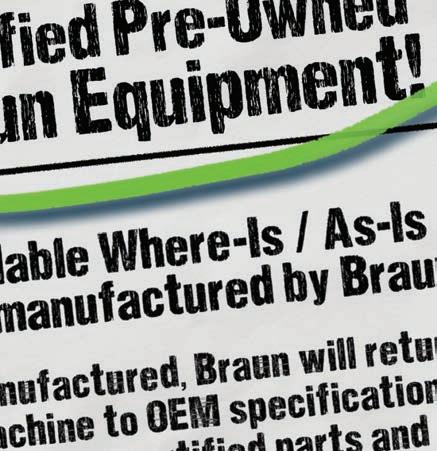
Unfortunately, removing that is a very manual process. Some people think it’s a very easy process, but there’s scraping involved, pre-treat with some type of chemical to soften the glue then it goes through stain wash. We go through a very stringent stain wash process. We inspect that to give it a final chance.
There is a process we go through to make sure stain wash is properly treated and we get it back to you properly.

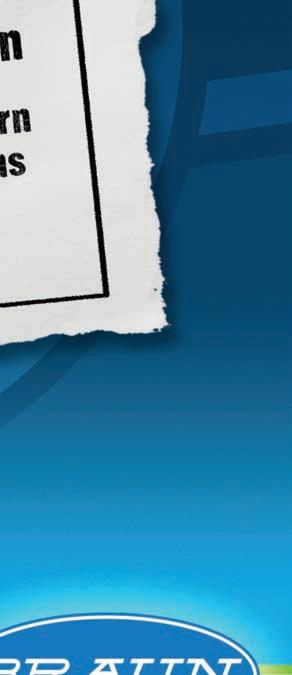
13
American Laundry News | May 2023 www.americanlaundrynews.com BUY WITH CONFIDENCE. Contact us about your older equipment, it may be more valuable than you realize! gabraun.com | 1-800-432-7286 Visit gabraun.com/remanufactured-equipment Manufactured in the U.S.A. | ISO9001:2015 Certified See Infection on Page 17
PANEL of EXPERTS
Talking to customers about rate increases
sider the following four steps to success:
1.Author a short narrative of your wonderful staff who take care of the customers who are regulars. (Both you and your customers love to have a happy face to greet them and help them while they are doing their laundry.)
can target large hotels that may need to replace their old machines and cannot get the capital from the owner or corporate.
Remember, these businesses continue to have difficulties hiring and retaining workers and the hotel industry is outsourcing their laundry needs to a larger extent every year.
increase in utilities, labor, supplies, etc.
Be specific: my labor costs have increased by 10% in the last six months. My utility costs have increased by 15% in the last nine months. This helps to position your rate increase as a function of costs that have increased for you.
Whether this question pertains to commercial or laundromats, the answer is similar.
Take this time to analyze and make needed changes to your laundry. Make sure you are running an efficient business by performing the following items:
1.Gather competitive info on other laundries in the local area.
2.Know your daily revenue and wages for similar jobs in the area.
3.Write down your commitment to continue providing superior service to your customers and include it when posting the price increase.
After you have completed these steps and are certain you MUST raise prices, con-
2.One page (maximum) explanation of why the increase is needed, even including the last time a price increase was necessary.
3.Adding no-cost or low-cost services to your business so your customers feel they are getting a return on the price increase.
4.Let them know just as their utility bills have increased so have yours.
In conclusion, at the same time you make a commitment to raising prices, make a concerted effort to grow sales. If you own a laundromat, increase wash-and-fold and take on some commercial laundry from local Airbnb, Vrbo, hotels, spas, etc. A commercial laundry
We can all agree that no one likes to receive a price increase, and no one really likes to pass one on.
However, there are strategies you can employ to make the task less troublesome.

First, be honest about how your costs have increased. Provide real data, be it an


This helps to provide logical, financial reasons for your price increase.
Consider looking at tiered or flexible pricing. Tiered pricing could be based on volume—the higher the volume, the lower the pricing. Flexible pricing could be based on the customer receiving a lower level of service for a break in pricing.
You could also consider providing some sort of temporary discount given to your long-term or best customers that helps to offset the price increase for a period. For example, you pass on a 10% rate increase; however, you provide your VIP customers with a three-month 5% discount to help to offset that increase.
If you don’t offer payment terms, consider offering them as a part of your rate increase. If you are passing on a 10% cost increase, offer a 2% discount for 15-day payment terms. Again, this can help to offset your rate increase.
Let your customers know ahead of time of your plan to raise your rates. This can help them to plan for it—do not just increase your rate on their invoice without communicating with them.

Be firm. Expect pushback. Be ready with documentation.
Hotel/Motel/Resort
Laundry Rodrigo Patron
Lace House Linen, Petaluma, Calif.
At this time, I think it’s safe to assume that we all have gotten plenty of phone calls and e-mails from our suppliers and vendors regarding price increases mainly due to “supply-chain issues.”
And in return, I think it’s also safe to assume that we’ve all had to make those same calls and send those same e-mails to our customers for the same unfortunate reasons.
The point I’m trying to make is that, for better or worse, we all understand and have learned to accept that the “supplychain issues” are a real thing and that, for the most part, we have zero control over them.
With this being said, and after a lot of trial and error, it has been our experience that to make things work, we can’t focus

14 May 2023 | American Laundry News www.americanlaundrynews.com
“Over the past few years, my cost per pound has gone up, and it’s reached a point that I must pass costs onto my customers. How can I best approach them about rate increases?”
Consulting Services
Cliff Beiser Champions Touch, Kissimmee, Fla.
Chemicals Supply
(Image licensed by Ingram Image)
John Schafer Diversey, Fort Mill, SC
on the things that we can’t control. Instead we must focus on the things that we can such as quality and service.
Nobody likes a price increase but going the extra mile with a last-minute emergency delivery, a quick turnaround, an extra pick up or delivery on Saturday or after regular delivery hours will make the price increase a little more palatable for our customers.
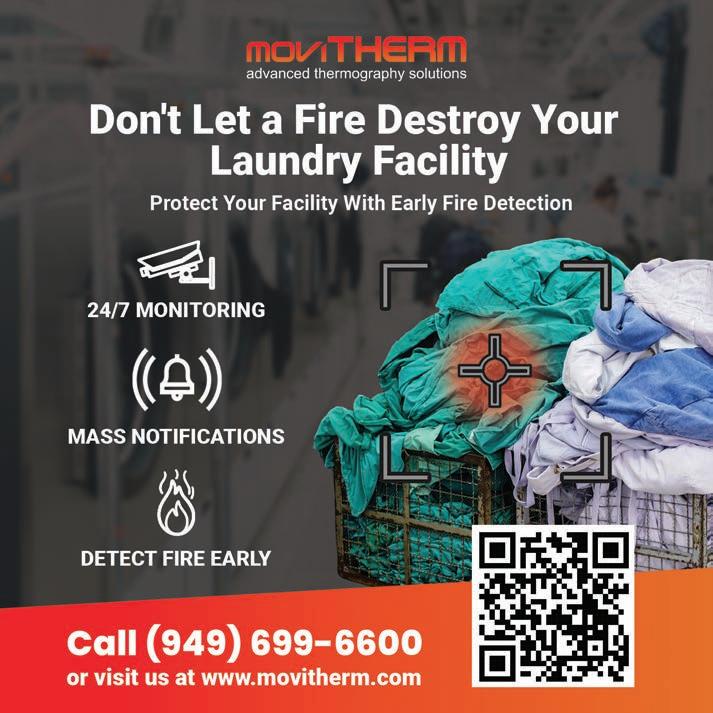
However, even with the best quality and service, there will be times when the customer will not or cannot accept a cost increase, and this is when you really must analyze the situation and decide if an account is a good fit and/or if it makes financial sense or not.
This of course would be the ultimate “worst-case scenario” situation, but nevertheless, I think it’s worth mentioning because sometimes keeping a client that is not a good fit does more harm than good to your plant operation and the rest of your clients.
In conclusion, I believe that our best and safest bet is to spend our time, energy and resources on all the things (no matter how few) that we can actually control so we can give our customers the best possible service, hope that they will see the value of our work and ultimately choose to continue to stay in business with us.


For us, the best approach that we have is to simply have a conversation with our customers about the reasons behind the necessary price changes.
There is not anyone out there who is a fan of accepting price increases, but we all know that just because we all have to tell our customers that our prices to them will be increased, we will not be making any more money because of that price change. And I think that is important to remind people of that being the case.
There is never anything more important than having a true and open conversation with someone on the reasons why price changes need to be made. Not to just send someone an e-mail without an important discussion.
It also allows both the vendor (the laundry) and the customer the opportunity to see what different options that could be put on the table that could be beneficial to both to help alleviate some of the price increase pain.
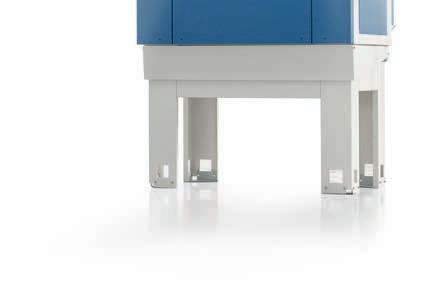
Over these last couple of years, we all know of the issues with pricing that have arisen across the board due to supply-chain issues, oil prices, transportation costs, etc. Because of that, most people can certainly understand why you as a vendor will have to increase your customer’s final cost.
That, of course, doesn’t make it any easier as your customers are getting the same types of increases from all their supply and service vendors. Eventually, your customers may say, “Enough is enough.”

























I can’t speak for anyone else, but we have always had a history of having backup information available concerning the “where and why” of what has been going on in the marketplace.
to treat your customers the same way that you want to be treated yourself.
As mentioned earlier, that is why I feel that an open and honest conversation about your situation, the world market and the reasons why your costs have increased would no doubt make the tough job of explaining why a price increase to your customers would hopefully end up being a result that your customer can accept and respect.
may give extra attention. The owner or sales/service manager of your company usually will have a conversation well in advance of the change with the main contact person of your client to explain the price increase or major service changes. Be prepared with your message and let them know how the price increase will benefit them.

A notice should be sent out at least 30 days prior to any service/price changes and use this opportunity to let the customer know about your superior customer service.
Let them know that in this changing economy, we understand that we must continue to focus on offering our customers consistent quality products and superior customer service. Be transparent and guarantee the highest satisfaction levels for your business partners.
There are obviously many ways to approach customers about rate increases. Every company and every customer is unique.
Do you alert every customer about the increase? Do you communicate the whole story, or do you just push it through? Is it a substantial annual increase or are they quarterly increases?
After over 45 years in the industry, experience has taught me to be transparent to the customer base with price increases, policy changes and service changes. When a company has phenomenal service, this means that it:
•Delivers on time.
•Has a quality product.
•Services and sells the client on every benefit.
A poor strategy is to have the item price reflecting all the charges of that item on one line with no service, no utility, no environmental, no fuel, and no loss and damage (ancillary) charges. The drawback is your competitors will quote a low item per piece cost and not reveal the ancillary charges on the quote, which, when added up, may be a total higher than your item charges.
To combat the onset of competitors learning of your price increase and targeting your customer base, have a program in place to tackle agreement extensions well in advance.
As a plastic bag supplier to the laundry industry where our costs are primarily dictated by oil, we know exactly what our laundry customers feel over these last couple of years because our cost per pound to produce has gone up as well.

Already having a truly good personal relationship with your customers certainly makes situations easier to handle and more acceptable to your customers.
It is certainly hard to tell anyone reading my comments on how to run their business, but like anything else, you want


Then the price increase is usually seamless. Always have a positive vibe to your message. Do not focus on the negative aspects of increasing costs, supplier change issues, delivery costs and rising utility costs because every other company focuses on them.
There are always customers whom you
This may be the time to negotiate the pricing for the next few years so there is no need to alert your customers about the price increase. All your sales and service staff must be included in the communication of this policy.
At Wagg’s Linen & Uniform, we incentivized our service and office staff on agreement extensions and there was no pushback on price increases.
My experience with pricing is to have a fair item cost and be transparent with service charges; keep it simple and clean.
15 American Laundry News | May 2023 www.americanlaundrynews.com
Textile/Uniform Rental
Equipment/Supply Distribution Ross Sanders Streamline Solutions, Orlando, Fla. 092722 KE 4.75x4.75 JR_OL.pdf 1 9/28/22 11:16 AM
W. Kirby Wagg Performance Matters, Orillia, Ontario
Purchasing pre-owned equipment with confidence
Author shares questions to ask when buying ‘as is,’ third-party rebuilt or OEM rebuilt
BY SANDRO BORTOLONI
SYRACUSE, N.Y. — There are three types of pre-owned equipment categories to consider when deciding on a piece of equipment not purchased new from the original manufacturer (OEM).
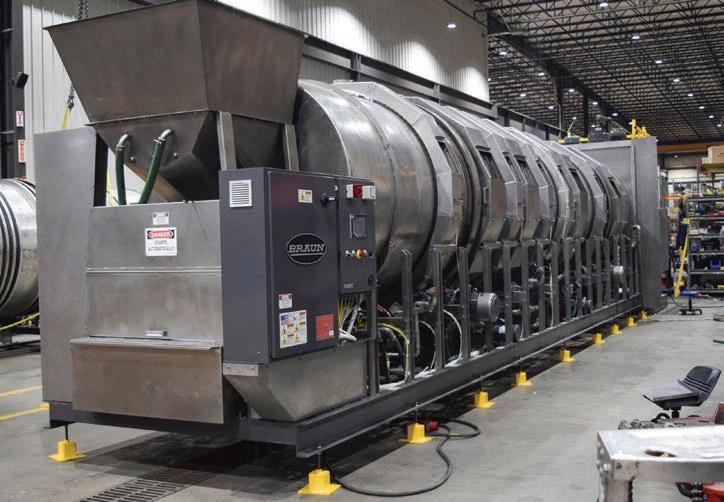
There is truly “used” equipment that is typically purchased “as is.” Second, there is the equipment purchased from a third party and then “rebuilt.”
Lastly, there is the equipment purchased from the OEM that is rebuilt to the OEM specifications and today’s standards of safety.
The key in each situation is to ask the right questions about the pre-owned equipment.
Here are some important questions a buyer in this “as is” situation should try to answer:
How many hours of actual runtime does the machine have on it?
If more than 30,000-50,000 hours, it is likely approaching the end of its useful life without going through a complete rebuild. (Note: 30,000-50,000 hours = 14-24 years of runtime based on a 40-hour week.)
Was the machine purchased new, and why is it being sold?
A thorough inspection should be conducted. Look for any structural issues, evidence of poor maintenance or any functional issues. These are “buyer beware” signals.
Has the machine been maintained and are there records to support this?
No record of preventative maintenance presents a red flag.
Are replacement parts still available for the machine from the OEM or another source?
If not, this is another red flag … especially control parts for an upgrade or retrofit.
Certifications—does the machine have any certifications (i.e., UL, CSA, ETL) and will they remain valid if the machine is purchased and relocated?

Depending on the machine type, certifications could be mandatory by the local municipality in order to run the machine. Most certifications end when the machine is moved to a new location.
Obtaining a new certification could be impossible.
Looking at a third-party rebuild? Here are
some questions to ask:
Does the rebuilder have references on other like equipment that you can check on?
No references could mean poor workmanship, and the machine may have been repainted but not rebuilt.
Has the machine been completely torn down and inspected for structural issues and repaired as necessary?
If the answer is “no,” or “yes” with no proof, beware.
Are controls and components upgraded to the latest available or even able to be upgraded?
If not, are you able to get parts for what the rebuilder is selling on the machine? Are they obsolete?
Does the rebuilder provide a warranty on the rebuilt machine and components?
No warranty puts you back in the “as is” scenario. If a warranty is not offered, you need to know what is covered.
What certifications are necessary for you to operate the machine in your munic-
ipality?
CSA and ETL certifying agencies state that no rebuilder other than the OEM can recertify a machine to CSA, UL, ETL or similar standards.
Does the third party offer aftermarket support?
If the third party outfitted the machine(s) with custom controls and/or parts, the OEM cannot help support the product when the machine breaks down and requires service. Often the changes that were made are not reversible.
Finally, if you are considering purchasing a rebuilt machine from the OEM, here are some questions to ask: Does the OEM have references for similar equipment?
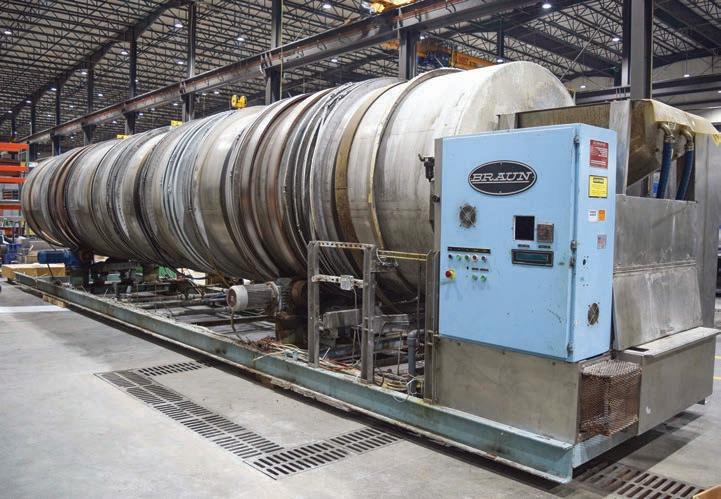
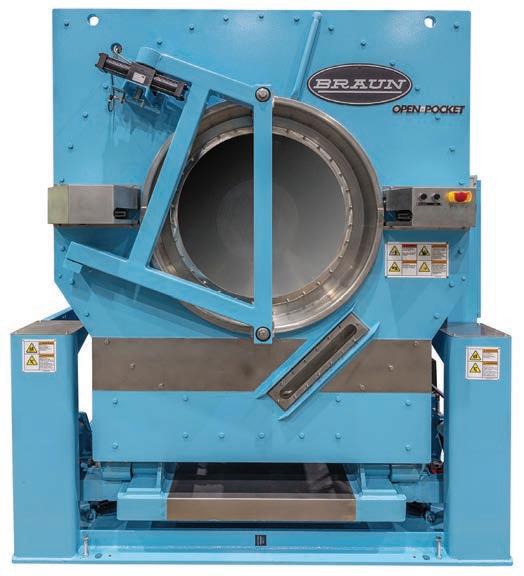
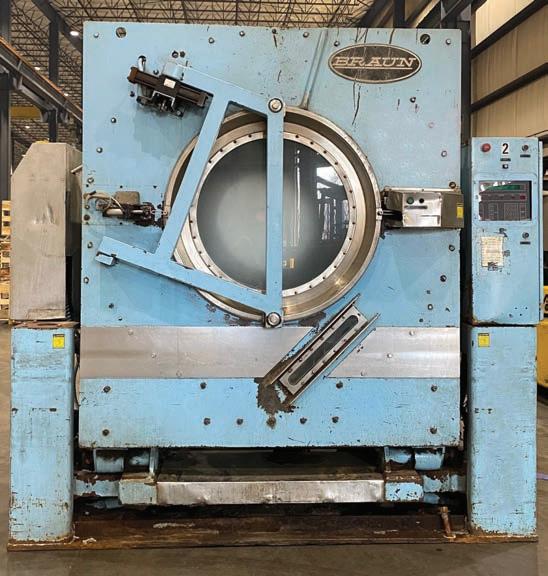
If the OEM cannot provide you with references on similar types of rebuilt equipment, that presents a red flag.
Was the machine completely torn down
and inspected for structural issues and repaired as necessary? Does the OEM provide a warranty on the rebuilt machine?
If it was not, there’s a good chance that the warranty, if any, will be limited.
Were all components and controls updated to the latest available platform and updated safety features?
If they were not, can you obtain replacement parts in the future through the OEM or another source? If the answer is no, you have cause for concern.
Does the OEM offer service and technical support?
This is an obvious benefit for the long-term health of your investment.
Whichever scenario you chose, take the time to do your homework and make sure a bargain is really a bargain.
16 May 2023 | American Laundry News www.americanlaundrynews.com
Sandro Bortoloni, is director of aftermarket operations for G. A. Braun Inc.
An open pocket washer before rebuild. (Photos: G.A. Braun)
The open pocket washer after rebuild.
A tunnel washer before rebuild. The tunnel washer after rebuild.
BORTOLONI
HARTSELL: And what I’ve always found is that a question like this is usually something from someone that’s never been in your laundry facility. They don’t realize the process involved in it.
We always try to pull them back in if you start hearing a complaint about I’m seeing a lot of tape, bring them in for a tour. We show how everything works in there, and we take them in front of the ironer or you can take them in front of a folder and encourage them to feed pieces.
You just fed five pieces in a minute, and you’re not making rate plus you didn’t do any quality checks. You just fed a piece with a big stain on it. Their eyes kind of light up and they’re like, oh, okay, I kind of understand.
Usually, we get this question when we start to work with a very small facility that had an on-premises laundry and they’re moving to a commercial facility.
We start talking to the administrators or the laundry personnel, and we realize that they were at one point in time they had two people folding a thermal blanket doing 60 pieces an hour for two people. And you know, there’s a reason why you guys came to us versus you keep paying somebody to spend an hour on 60 blankets.
Are personal washers acceptable to use in a hospital setting for laundering privacy curtains, bedspreads, linens, etc.?





HARTSELL: This is one a lot of times that after they come in to tour the facility and they realize just maybe how inadequate their little washer is, a little personal washer that they have at home and they also have it in the NICU ward, how inefficient that really is to not only wash but monitor and use the proper chemicals and all this other stuff.
You’re relying on a human to put the right amount of detergent in. And really you only have an option of detergent or detergent. Maybe you can add an oxidizer to it, but you have no control and you probably are not

going to hit the right temperatures with it. There’s no monitoring of it. If your hot water shuts off, it’s going to run cold water. So, I think it really scares a lot of people when they start to kind of think about it.
And a lot of times, it’s kind of like The Wizard of Oz behind the curtain, you know, we’re not going to look over there to see how they’re doing it. From our standpoint of a commercial laundry, it’s not sufficient. There are not enough controls and processes in place to ensure that.
What are some strategies for dealing with inspectors who require you to wash 160 degrees for 25 minutes, especially that new inspector?
MANGINI: It’s educating. It’s bringing them the best practices we’ve always used and going back to the washroom schematic. Bringing up your independent lab reports.
It’s the trying to educate them along and
showing them what the wash temperatures are going through, we go up to 155-160, and showing them the actual process.
MALBOEUF: It’s an education process and sometimes that can be the most challenging part of this.
For us it’s going back to the wash pie— time, temperature, mechanical action and chemistry—and then sharing with them this is the type of disinfectants we use, the EPA registration that kills 99.99% of pathogens. That type of data is what we share with them, and even as commercial we send laboratory testing to have our product brand tested by each location.
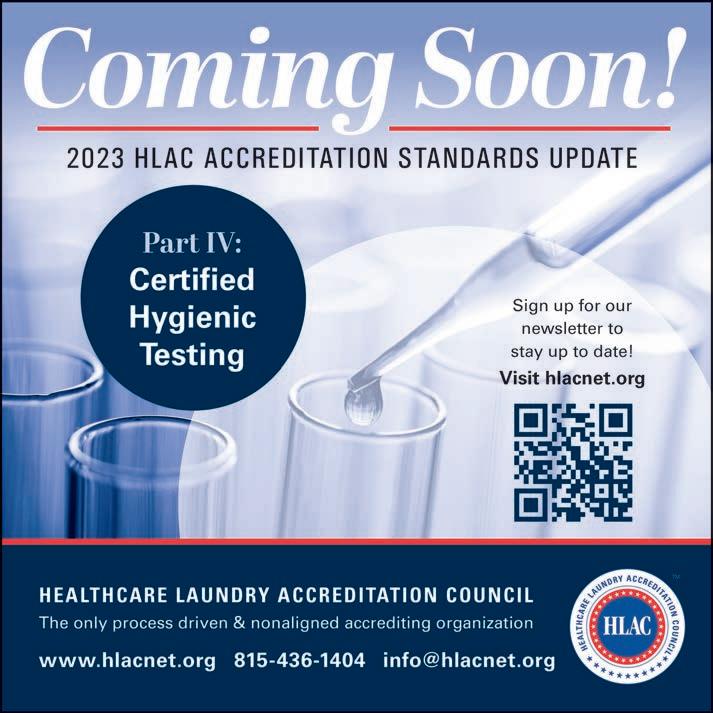
HARTSELL: I found that if you try to have a group of ICs/IPs together, some people lose their braveness if they were by themself. So, I always try to have a group come in. It’s a little more successful. It could be a little more difficult if you’re a large plant to have
a group of four or five different systems or hospitals. But a lot of times, you can spin it off as a networking event for them. They can meet some people and a lot of times, you’ll have that one really experienced IC/IP that’s been in your facility multiple times, and they’re comfortable with you, they know that you’re doing everything you can to do it right. Because all of us here are trying our best to do the right thing.
Nobody’s out there consciously trying to reduce my temperature, my wash process down, 5 degrees to save a little bit on utilities. We want to do the right thing.
I’m sure that you saw a reduction in people taking tours and doing the inspections during COVID. And then when we spun back up, there were a lot of new faces, new people coming in. So, we lost a lot of momentum and those relationships that we had with those former IC/IPs out there.
17
Infection Continued from Page 13 American Laundry News | May 2023 www.americanlaundrynews.com @AmericanLaundryNews facebook/americanlaundrynews www.americanlaundrynews.com FOLLOW US on Facebook & Twitter Share Our Content Tell Us What’s on Your Mind
(Image licensed by Ingram Image)
Track Career
Emerald hires Sanchez as VP sales, marketing

LOS ANGELES — Emerald Textiles, a portfolio company of Los Angeles-based private investment firm Pacific Avenue Capital Partners LLC, reports that Dan Sanchez has joined the executive management team as vice president of sales and marketing.
“We are extremely excited to have Dan join the Emerald team,” says CEO Andrew Kratky.
“Dan complements our strong customer-focused culture, and we believe his impressive industry reputation and knowledge of the business makes him the right choice to lead our sales and marketing organization.”
Sanchez served most recently as the chief business officer, North America, for Eleks, a technology consulting software company. He has more than 30 years of professional experience at Medline, a global manufacturer and distributor of medical supplies.
While at Medline as the VP of national accounts, he worked with healthcare group purchasing organizations, integrated deliv-
ery networks and the commercial laundry industry in both the United States and Canada.
Sanchez also served on the boards of both the TRSA and the American Reusable Textile Association (ARTA).
R&B Wire Products names Rawlins president
SANTA ANA, Calif. — R&B Wire Products, a manufacturer of industrial material handling products, reports it has promoted Grant Rawlins to president of the company.
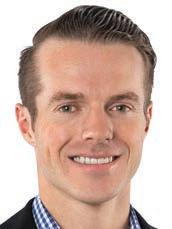
Rawlins, the third generation in his family to lead the company, has been with R&B Wire Products since graduating from Pepperdine University in 2016.
During his time at R&B Wire Products, he has held various leadership positions within the company to learn all aspects of the business.
Most recently, he led an 18-month process of evaluating, testing and implementing a new ERP (enterprise resource planning) system to modernize and streamline the operational aspects of the business.
“Grant is an exceptional leader who has developed a deep understanding of our business, from the day-to-day operations to the long-term goals and overall strategy,” says Rick Rawlins, CEO.
“I am honored and excited to take on this new role as president,” says Grant.
“What motivates me every day is my responsibility to continuously improve all aspects of our business—from our team and culture to our products, infrastructure and processes.
“This is all made possible with our team’s dedication and hard work.”
In his free time, Grant enjoys surfing, traveling, swimming and fishing.
Garcia joins LAVATEC service team
BEACON FALLS, Conn. — Laundry equipment manufacturer LAVATEC reports that it has hired Marco Garcia as a service technician.
Based in Las Vegas, he has more than 25 years of mechanical and technical experience working with industrial machinery. Joining LAVATEC marks Garcia’s return to the laundry world following a 10-year absence.

After serving as an aircraft mechanic in the Honduran Air Force, Garcia moved to the United States and began working at Mission Industries in Nevada in 1997. The industrial laundry operation processes
linen for Las Vegas area hotels, and he was responsible for installing, maintaining and upgrading the equipment and training other workers.
Garcia spent 10 years there and another six as a service technician at JENSEN USA before pivoting to similar positions with glass and metal manufacturers.
He joined LAVATEC after working on industrial machines for one of the largest roofing contractors in the Las Vegas area since 2021.
“I learned early in my career that trying to install equipment in a third-world country with the lack of proper tools can be very challenging,” says Garcia.
He’s been married for 31 years and is the father to four children, including a 17-year-old son who wants to follow in his footsteps as a career path.
“Working at Mission Industries helped me develop my skills because I learned how to troubleshoot,” shares Garcia.
“I was introduced to LAVATEC machines in 2000, and I’ve now come full circle to doing what I know best. I hope to retire working on the machines that made me who I am today.”
TRSA hosts 13th Annual Legislative Conference in D.C.
ALEXANDRIA, Va. — TRSA held its 13th Annual Legislative Conference in Washington, D.C., March 22-23.
In addition to attending committee meetings, networking events, briefings and receptions, association members participated in TRSA’s annual Hill Day, which included a total of 93 in-person meetings with federal lawmakers and staff.
Representing the linen, uniform and facility services industry, TRSA operator and supplier partner member executives advanced TRSA’s advocacy agenda by calling for action on various priorities impacting the industry, with a focus on two top issues:
• The need to ensure that healthcare staff is properly protected at work by requiring hospitals, healthcare facilities and other outpatient clinics to maintain minimum levels of reusable healthcare textile personal protective equipment (PPE) as a counterbalance to disposable equivalents.
• The need to maximize infection prevention by requiring hygienic laundering of healthcare uniforms by certified linen, uniform and facility services businesses.
The group educated legislators on the importance of professionally laundered, hygienically clean healthcare personnel attire (HPA) and provided evidence that supports the essential need to manage potentially contaminated fabrics within a controlled environment to mitigate crosscontamination risks.
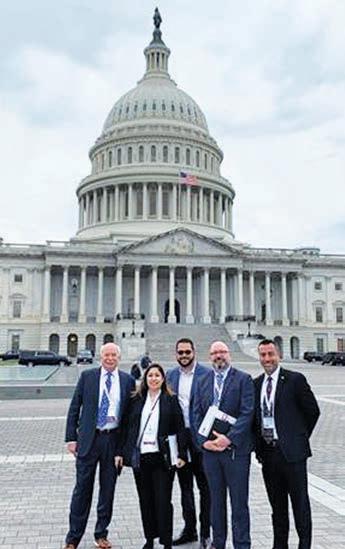
This led to their call to establish requirements for healthcare facilities to provide HPAs for all healthcare workers per shift as well as the need for healthcare workers to leave soiled HPAs at their facilities.
TRSA members also described careful monitoring of industrial processes at their companies and the stringent requirements of TRSA’s Hygienically Clean certification, which recognizes companies’ commitment to cleanliness through third-party, biological testing and inspection.
Instead of allowing healthcare uniforms to be worn and washed at home, this process eliminates subjectivity around various individual standards for “clean” by focusing on results that verify textiles cleaned in these facilities meet appropriate hygienically clean standards and established industry guidelines, policies and procedures.
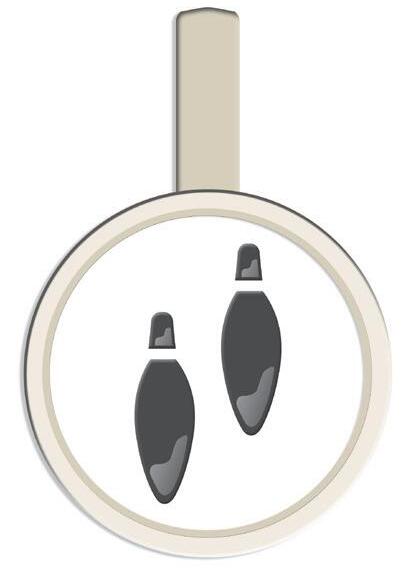
TRSA Hill Day attendees urged mem-
bers of Congress to co-sign a letter to the Department of Health and Human Services (DHHS) Secretary Xavier Bacerra to examine how DHHS can ensure that healthcare facilities maintain a greater balance of reusable PPE to better protect healthcare staff members and the environment from the harmful impacts of disposables.
The increased supply of reusable healthcare textiles ensures healthcare providers are better prepared for the possibility of future pandemics.
“The meetings on the Hill were engaging, well organized and productive in my opinion,” says Jim Kearns, executive vice president/CFO of Alsco Uniforms in Salt Lake City and chair of TRSA’s Board.
Kevin Schwalb, TRSA’s vice president of government relations, briefed the members on TRSA’s key legislative issues before they departed for their meetings on Capitol Hill.
Attendees were also well versed on the current political landscape after attending the previous day’s keynote speech from Bob Cusack, editor in chief of The Hill, as well as the Hill Day Issue Briefing featuring policy directors from Brownstein Hyatt Faber Schreck LLP, Brian Wild and Drew Littman.
18 May 2023 | American Laundry News www.americanlaundrynews.com
RAWLINS
SANCHEZ
GARCIA
Roger Harris, Metro Linen (left); Theresa Garcia, Division Laundry; Will Hacker, Landau Uniforms; Jhovanny Rodriguez, Alliant Systems; and Tom Herrington, Ecolab, met with federal lawmakers and staff during Hill Day. (Photo: TRSA)
Members head to Capitol Hill to advocate for increased safety and a stronger healthcare supply chain
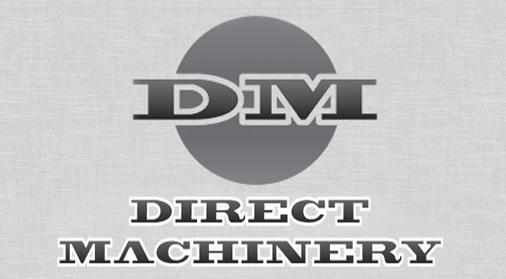







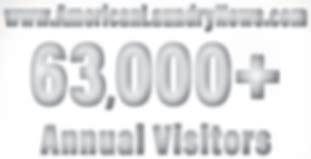
















































19 American Laundry News | May 2023 www.americanlaundrynews.com Classified Advertising 2023 CLASSIFIED RATES: One- to fivetime rate: $3.00 per word, boldface $3.05 per word. Minimum charge: $50.00 per ad. Call or write for our six- and 12-time rates. If box number is used, add cost of five (5) words. Display classified rates are available on request. All major credit cards are accepted. DEADLINE: Ads must be received by the 1st of the preceding month. For example, for a June ad, the closing date is May 1st. PAYMENT FOR CLASSIFIED ADS: Must accompany order. DESCRIPTION FOR NEW OR USED LAUNDRY EQUIPMENT, DM IS YOUR SOURCE FOR ALL YOUR NEEDS COMMERCIAL LAUNDRY CLOSING: Milnor 8 Module Pulse Flow CBW/Press with Monorail with slings (5) 64/58 up to 320 Lb Gas System Dryers (July 2015) (4) Chicago Century 2 Roll 52” Steam Ironer (2019), Various years (1) Edge Maxx (2019) (4) Edge, Various years (1) Chicago Skyline 1 Lane (2019) (1) Skyline 4 Lane, (2) Skyline 1 Lane, Various years (3) Air Chicago XXL Blanket, Towel and Gown Folder, Various years (2) Braun Towel & Gown Folders (3) Milnor Soft Mount Open Pocket 140 LB Washers (2015) (2) Milnor M202 Gas Fire Dryers (20015) (2) 500 HP York Shipley Gas Boilers (1) Colmac Connie Lab Coat Presser (3) Quincy Air Compressors Voss 75 Pound Tunnel Washer (1984) Multiple Linen Carts (350) Scissor Dock Lift Portable Scissor Dock Riding Lift For pricing and the latest list call Ron Hirsch 516.938.4300 • 516.315.7426 Hicksville, NY • www.directmachinery.com First Quality Healthcare Textiles Gowns-Bath Blankets-Sheets All at GREAT PRICING!! Call 757-448-8589 The Griffin Group, Inc. “Recruitment Specialist” ® Need to fill a position? Call Deana Griffin 888-235-2365 www.thegriffingroup.cc deana@thegriffingroup.cc USED EQUIPMENT AVAILABLE G2 System 130 Ib 240 volt (1) 1999 4 Pocket Load Conveyor (CONWA) (1) 1998 Milnor G2 mod Tunnel 240 volt (1) 1998 Single stage 35 bar Press (1) Coinc Incline Conveyor (1) 1999 Milnor Shuttle (5) 1998 Milnor 300lb 58080TG1 (1) 2016 Milnor bypass Conveyor (1) Milnor Dryer takeaway Conveyor (1) Minor Autolint (Autovac) (1) 2000 Milnor 60 lb Washer (1) 2003 Milnor 135 lb Washer (1) Huebsch Steam Loadmaster (1) Cissell Dryer Model L36UR0300 (1) 2015 Jensen 3 Roll EXP 1200 (2) Jensen Max Stackers (no Folder) (1) 8-Roll American Sylon (1) 1990 Braun Omega Folder/Crossfolder www.ineedjpequipment.com 800.925.3236 www.AmericanLaundryNews.com 000+ Annual Visitors Advertise Today Contact Don Feinstein • 312-361-1682 MMATS REPLACEMENT COMPUTER BOARDS For Folding Equipment AMKO AMERICA INC. New & Remanufactured Finishing Equipment WWW.JBILAUNDRYFOLDER.COM 561-863-9696 AmkoAmerica@gmail.com Place your ad AmericanLaundryNews.com ONLINE! DISTRIBUTOR OFFERINGS EMPLOYMENT EQUIPMENT FOR SALE EQUIPMENT FOR SALE LINENS FOR SALE Advertise Today Contact Don Feinstein • 312-361-1682 Reach 750 + Laundry Professionals American LaundryNews .com More than unique visitors monthly! 8,200 KEEPING IT GREEN SINCE 1970 EQUIPMENT AVAILABLE: 1-2007 Braun Mini Folder 2-2000 Braun Sheet Stackers. 2-1998 Braun 400# Braun OP. 2-Braun Extract Motors for 600# OP. 1-2001 Chicago King Edge •PARTS•BOARDS•SHOCKS• We buy single items and complete plants. Plant Clean-Out Specialists. Please visit our website: www.stancoind.com E-mail: buyer@stancoind.com Stanco Industries, Inc. Serving The Textile Trades Since 1970 800-932-3769 Ask for Mike or Deb DISTRIBUTOR OFFERINGS















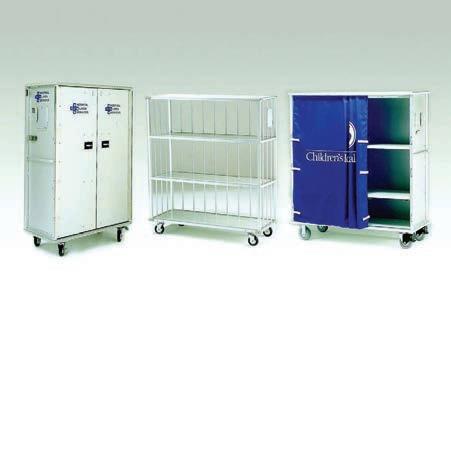
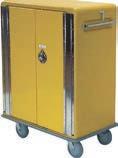
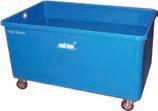



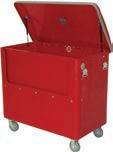
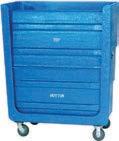

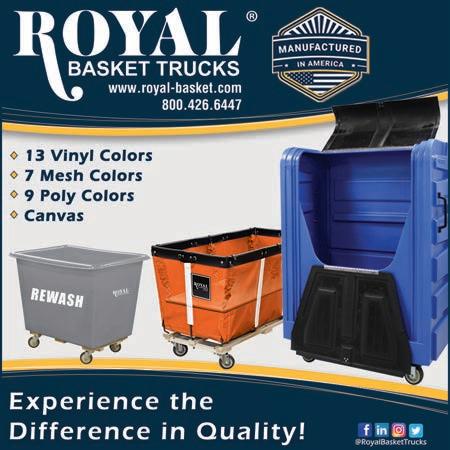
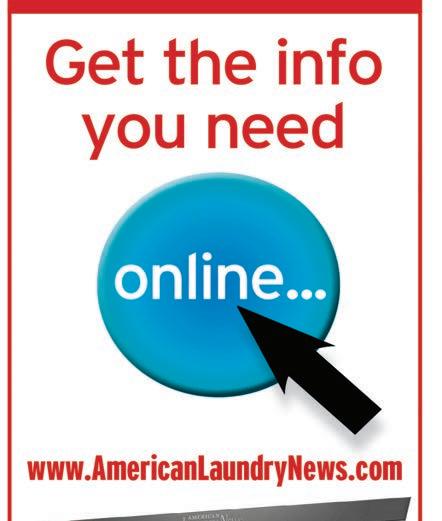






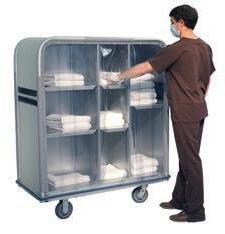

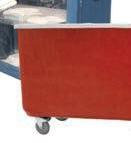






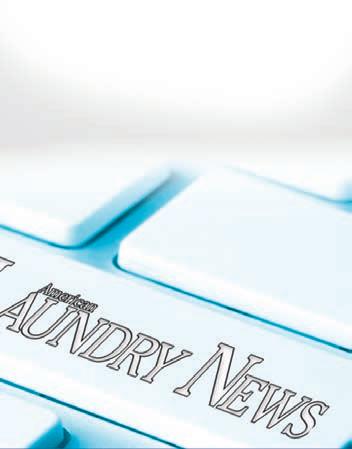

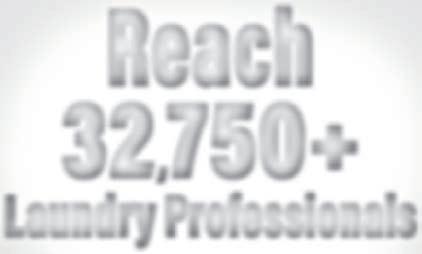





































20 May 2023 | American Laundry News www.americanlaundrynews.com Source Directory listings in American Laundry News are sold on an annual basis at the following rates: All Major Credit Cards Accepted 2023 Listings Regular Boldface All Caps Four Line Listing per Year $1,000 $1,265 $1,265 Display and additional line rates available upon request Source Directory A convenient guide to sources of products and services www.colmacind.com 800-926-5622 Tunnel Finishers Cube CFS 90 “SkinnyMac” Garment Presses Triple Connie Turbo Quality For more information: G.S. Manufacturing 1-800-363-CART (2278) www.gsm-cart.com ...for the Long Haul. Precision built, all welded, anodized aluminum carts, specifically engineered for the extremes of loading, handling, cartwash and off-site transport in your busy laundry. Available in a wide range of models and sizes, and always to your custom requirements. Sani-Trux Carts Deliver a Larger Workload With Less Effort mcclurequotes@gmail.com www.mcclureindustries.com • 800-752-2821 80 different models • Won’t warp • Twice the life span as Poly Carts. • 2000lb capacity Fire Retardant Rated ASTM E1354 • Many different options: caster upgrades, drain valves, bumpers, brakes, P-Locks, gas props, locking doors & push handles. www. AmericanLaundryNews .com PLACE YOUR AD HERE Don Feinstein • 312-361-1682 CONTACT US TODAY! TQind.com | 800.826.1245 | TQcarts@TQind.com Performance Driven PRECISION MADE CARTS Since 1961 as seen at CLEAN ’22 APPAREL FINISHING CARTS, TRUCKS & BASKETS CARTS, TRUCKS & BASKETS CARTS, TRUCKS & BASKETS Advertise Today Contact Don Feinstein • 312-361-1682 Reach 750 + Laundry Professionals American LaundryNews .com More than unique visitors monthly! 8,200 Check out our Digital Edition ONLINE! www.americanlaundrynews.com

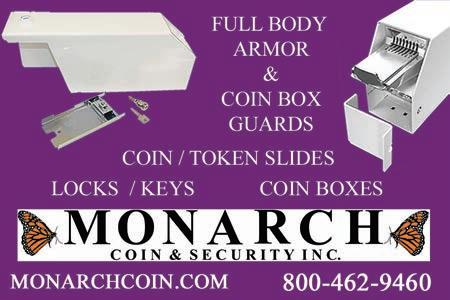
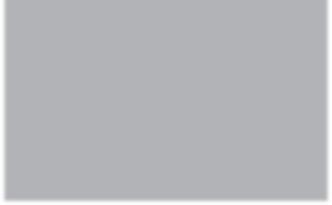
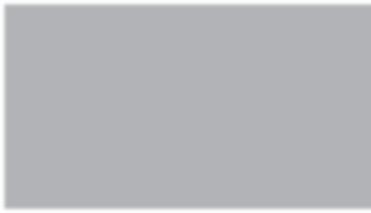
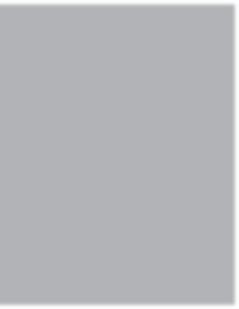


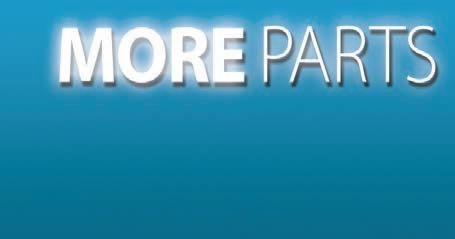
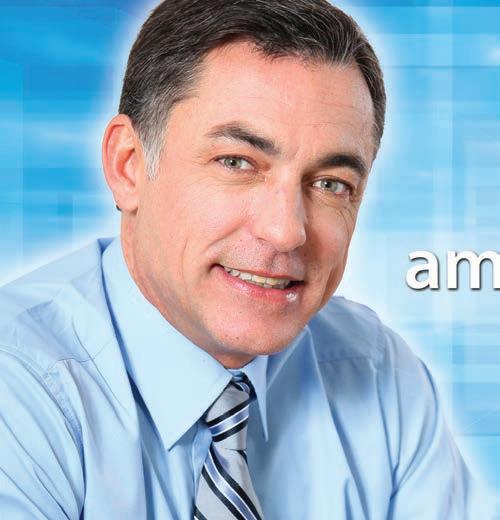
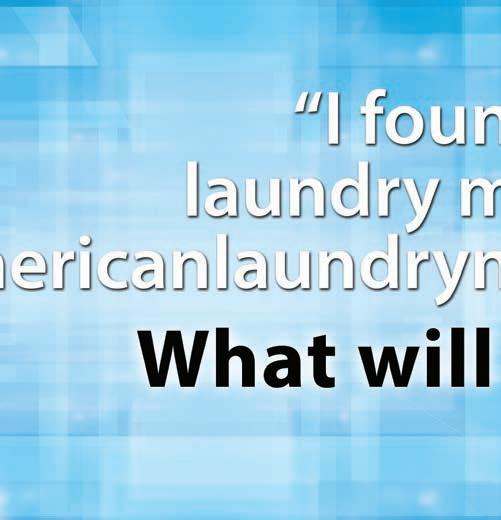
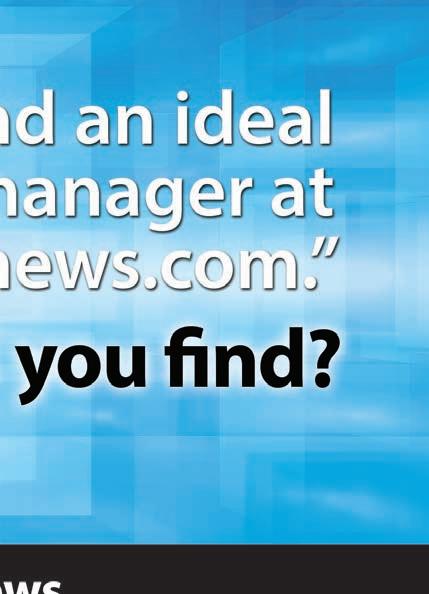

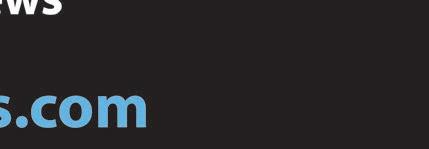
21 American Laundry News | May 2023 www.americanlaundrynews.com Source Directory listings in American Laundry News are sold on an annual basis at the following rates: All Major Credit Cards Accepted 2023 Listings Regular Boldface All Caps Four Line Listing per Year $1,000 $1,265 $1,265 Display and additional line rates available upon request Source Directory A convenient guide to sources of products and services Pellerin Milnor Corp. P.O. Box 400, Kenner, LA 70063 504-467-9591, Fax: 504-468-3094 www.milnor.com Pellerin Milnor Corp. P.O. Box 400, Kenner, LA 70063 504-467-9591, Fax: 504-468-3094 www.milnor.com TO PLACE YOUR AD C ALL D ON F EINSTEIN 312-361-1682 800-826-1245 • cleancyclesystems.com CCS MODELS AVAILABLE FOR ANY SIZE OF LAUNDRY OPERATION OPL Series Utility Free DLF Models Automatic Blow Down LINT LASSO In-Line Lint Filter as seen at CLEAN ’22 COIN/TOKEN OPERATED PARTS DRYER BOOSTER & EXHAUST FANS DRYERS — 100 POUNDS OR LESS DRYERS — 100 POUNDS OR MORE LINT COLLECTORS & FILTERS www. americanlaundrynews .com Place your ad ONLINE! www. americanlaundrynews .com
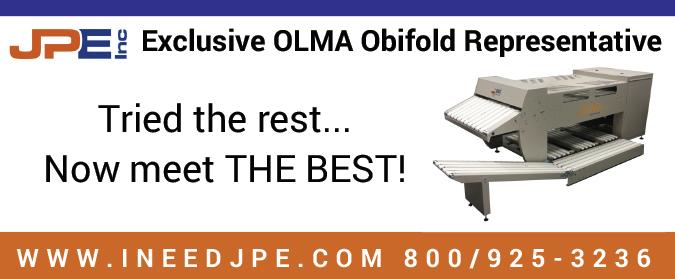
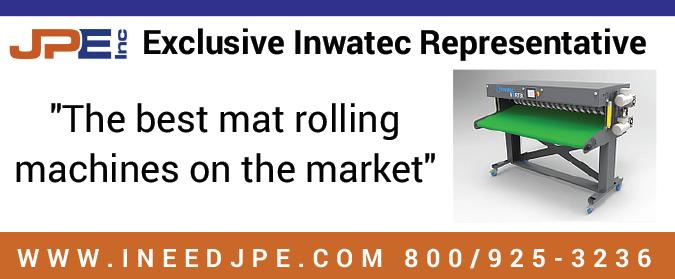
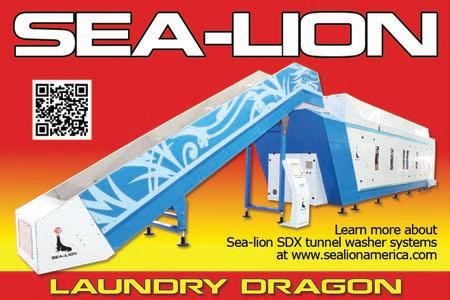
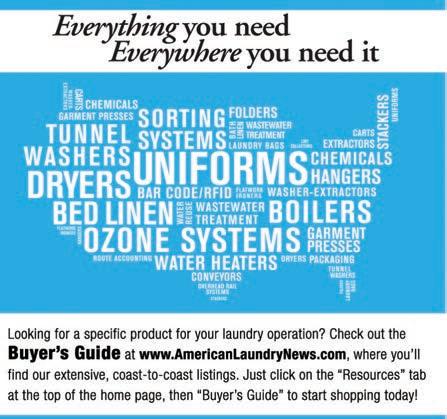



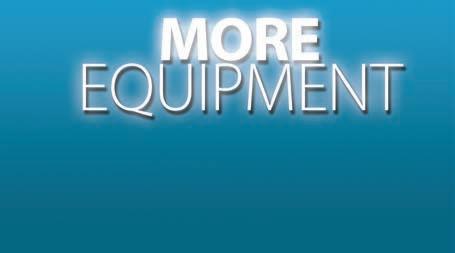


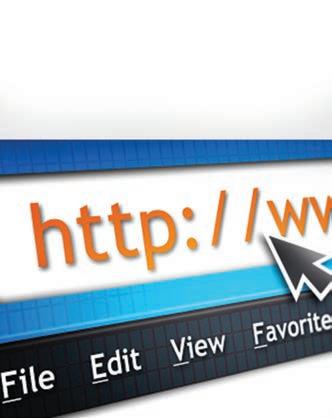

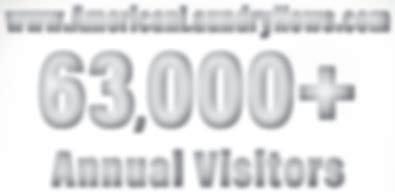







































22 May 2023 | American Laundry News www.americanlaundrynews.com Source Directory listings in American Laundry News are sold on an annual basis at the following rates: All Major Credit Cards Accepted 2023 Listings Regular Boldface All Caps Four Line Listing per Year $1,000 $1,265 $1,265 Display and additional line rates available upon request Source Directory A convenient guide to sources of products and services Pellerin Milnor Corp. P.O. Box 400, Kenner, LA 70063 504-467-9591, Fax: 504-468-3094 www.milnor.com Pellerin Milnor Corp. P.O. Box 400, Kenner, LA 70063 504-467-9591, Fax: 504-468-3094 www.milnor.com Pellerin Milnor Corp. P.O. Box 400, Kenner, LA 70063 504-467-9591, Fax: 504-468-3094 www.milnor.com Pellerin Milnor Corp. P.O. Box 400,
504-467-9591, Fax: 504-468-3094 www.milnor.com Company Page Company Page INDEX OF ADVERTISERS Continental Girbau 7 Direct Machinery 19 HLAC 17 GA Braun 13 The Griffin Group 19 J.P. Equipment 19 Kannegiesser ETECH 15 Lavatec Laundry Technology 24 Monarch Brands 5 MoviTHERM / MoviMED 15 Pellerin Milnor Corp. 3 Spartan Chemical Company 11 Stanco Industries 19 UniMac 9 MAT ROLLERS PRESSES — EXTRACTION SMALL-PIECE FOLDERS TUNNEL WASHER SYSTEMS WASHERS — CONTINUOUS BATCH WASHER-EXTRACTOR — 100 POUNDS OR LESS WASHER-EXTRACTOR — 100 POUNDS OR MORE www. AmericanLaundryNews .com www.AmericanLaundryNews.com 000+ Annual Visitors Advertise Today Contact Don Feinstein • 312-361-1682
Kenner, LA 70063
UNX-Christeyns receives 2023 SafeTRSA Safety Excellence Award
GREENVILLE, N.C. — Chemical manufacturer UNX-Christeyns reports it was recognized by the industry for the third consecutive year on March 22 when President Rudi Moors accepted the 2023 SafeTRSA Safety Excellence Award.

TRSA presented the honor during its 13th annual Legislative Conference industry awards dinner held at the Westin City Center in Washington, D.C. UNX-Christeyns won the award for completely revamping its liquid laundry chemical product labels. A new colorcoded system provides care and safety information for each product grouping. Team members are also involved by training and assisting distributors and customers on the new labeling system.
“The UNX-Christeyns label improvement effort reflects the company’s embrace of safety as a true corporate
AWARDS
AND HONORS … FINANCIAL REPORTS …


value, a key characteristic of companies that win the SafeTRSA award,” says Ken Koepper, TRSA director of member and industry relations.
“Better labeling touches the bases that score laundry safety success; getting employees involved in recommending improvements, prompting top management to fund these, and devising new training and communication that ultimately culminates in better protection.”
“As one of our core values, we place safety among the highest priorities for customers, distributors and employees,” says Moors. “To achieve the best results, it requires us to place an emphasis on making chemicals as safe as possible.
“On behalf of the entire team at UNXChristeyns, we are deeply grateful to receive this award.”
Also receiving the 2023 SafeTRSA Safety Excellence Award were ARCO/ Murray, Balfurd Linen Service, Ecolab Textile Care, Linen King, Meese, Superior Health Systems and Virginia Textile Service.
UNX-Christeyns won the TRSA Above & Beyond Service award in 2022 for providing exemplary service to customers. It followed the 2021 TRSA Company Community Service award where the company was recognized for its involvement in local events.
Employees continue to volunteer their time and participate in various community fundraisers and projects. This includes cleaning all uniforms of players competing in the Little League Softball World Series, which returns to Greenville, North Carolina, in August for its third consecutive season.
Alliance Laundry Systems Distribution expands West region
RIPON, Wis. — Alliance Laundry Systems, a provider of commercial laun-
























dry equipment, reports it has acquired the distribution assets of Pittsburg, California-based Taylor Houseman. Terms of the deal were not disclosed.
Taylor Houseman has more than two decades of experience providing commercial laundry solutions in Northern California.
“This acquisition further solidifies our capacity to provide exceptional services in the significant California market,” says Craig Dakauskas, senior vice president, Americas commercial, Alliance Laundry Systems.
“Taylor Houseman’s reputation for taking care of customers at a high level matches our values and focus perfectly.”
Taylor Houseman will become part of the Alliance Laundry Systems Distribution West Region while maintaining its Pittsburg office.
For more than 25 years, the team at Taylor Houseman has delivered highquality commercial laundry products, services and support for on-premises laundry, drycleaning, laundromat and industrial laundry customers in Northern California.
They are a full-service distributor, offering technical service and replacement parts.



“I am thrilled to be able to offer our customers a whole new level of service through this sale,” says Randy Houseman, president of Taylor Houseman.
“We have incredibly loyal customers, so it’s exciting to transition them to the global leader in commercial laundry.”
Gurtler acquires OMNI Solutions UV technology for tunnel systems
SOUTH HOLLAND, Ill. — Gurtler Industries, a manufacturer of advanced detergents, specialty chemicals and injection systems for the commercial laun-

Calendar of Events
31
dry industry based here, reports that it has signed an agreement with OMNI Solutions to acquire full rights to OMNI’s SULAOS, Smart Ultraviolet Light Advanced Oxidation System.


Under the agreement, Gurtler will own the SULAOS technology exclusively for the tunnel system markets across the world.

Gurtler says it will also partner with OMNI’s current users of their technology in existing tunnel systems.
“We are very pleased to be able to acquire this technology,” says Greg Gurtler, president. “The Omni UV System enhances the oxidation process in tunnels, increases stain removal and whiteness, and most importantly, significantly reduces microbial contamination in the tunnel.”
Gurtler says it will be rebranding the system under the Gurtler Vis•Tex™ family of equipment and dispensing systems.
The system is designed for today’s modern tunnel washers and will be renamed the Vis•Tex Omni UV Tunnel System, the company shares.
The system treats press water with a combination of potent oxidizers and ultraviolet light and returns the treated water to the rinse zone, virtually eliminating organic contaminants, which provides reduced microbial contamination in the rinse zone.
Two years ago, Gurtler and OMNI Solutions entered into an exclusive marketing/distribution agreement for the SULAOS equipment.
“The decision to fully acquire this UV Tunnel System technology was a natural outgrowth of our exclusive distribution agreement,” says Matt Wenzel, executive vice president of Gurtler.
“Over the last two years, Gurtler has learned about the major benefits of this exclusive technology and how to best adapt it to today’s tunnel operations and the market’s needs.”
Under the terms of the agreement, Gurtler will take responsibility for the existing Omni UV Tunnel Systems in the market.

Wenzel adds, “Gurtler will be contacting all of the current users of the UV system in their tunnels and reviewing their operations to make sure they are taking full advantage of this unique technology’s capabilities.”
Health and Safety Summit Series: OSHA
Compliance: Confined Spaces, On-Premises Contractor Operations


Alexandria, Va.
TCATA
Management & Education Conference Scottsdale, Ariz. Info:

“We are excited about the adoption of this technology by Gurtler,” OMNI Solutions founding member Andrew Rupnow says. “We look forward to working with their talented team throughout this process to ensure a smooth transition for our existing SULAOS customers.
“Gurtler’s advanced support infrastructure and deep knowledge in the commercial laundry industry will help advance this technology to the next level.
“OMNI will continue focusing on its primary business, the LUX™ UV Laundry Program, and would like to sincerely thank the Gurtler team for their continued partnership and support over the years.”
23 American Laundry News | May 2023 www.americanlaundrynews.com
May 3 TRSA HR & Labor Management Summit Series: Workplace Harassment 101, Awesome Human Project Alexandria, Va. Info: 703-519-0029 10-11 TRSA Production Summit Kansas City, Mo. Info: 703-519-0029 15-19 Association for Linen Management Laundry & Linen CollegeTextile Care Services Lexington, Ky. Info: 859-624-0177 17 TRSA Health and Safety Summit Series: Driver Safety: Behind the Wheel, Driver Safety: Off the Road Alexandria, Va. Info: 703-519-0029
TRSA
23-25 G.A. Braun General Service School: Finishing Equipment Syracuse, N.Y. Info: 800-432-7286, ext. 219 24
Health and Safety Summit Series: Stop, Drop & Roll: Fire Safety & Prevention, Risk Assessment: Potential and Probable Outcomes Alexandria, Va. Info: 703-519-0029 TRSA
… SUPPLIER NEWS … INDUSTRY EVENTS …
Info: 703-519-0029 June 4-7
813-348-0075
TRADE TICKER…
UNX-Christeyns President Rudi Moors accepts the 2023 TRSA Safety Excellence Award at a ceremony in Washington, D.C., on March 22. (Photo: UNX-Christeyns)
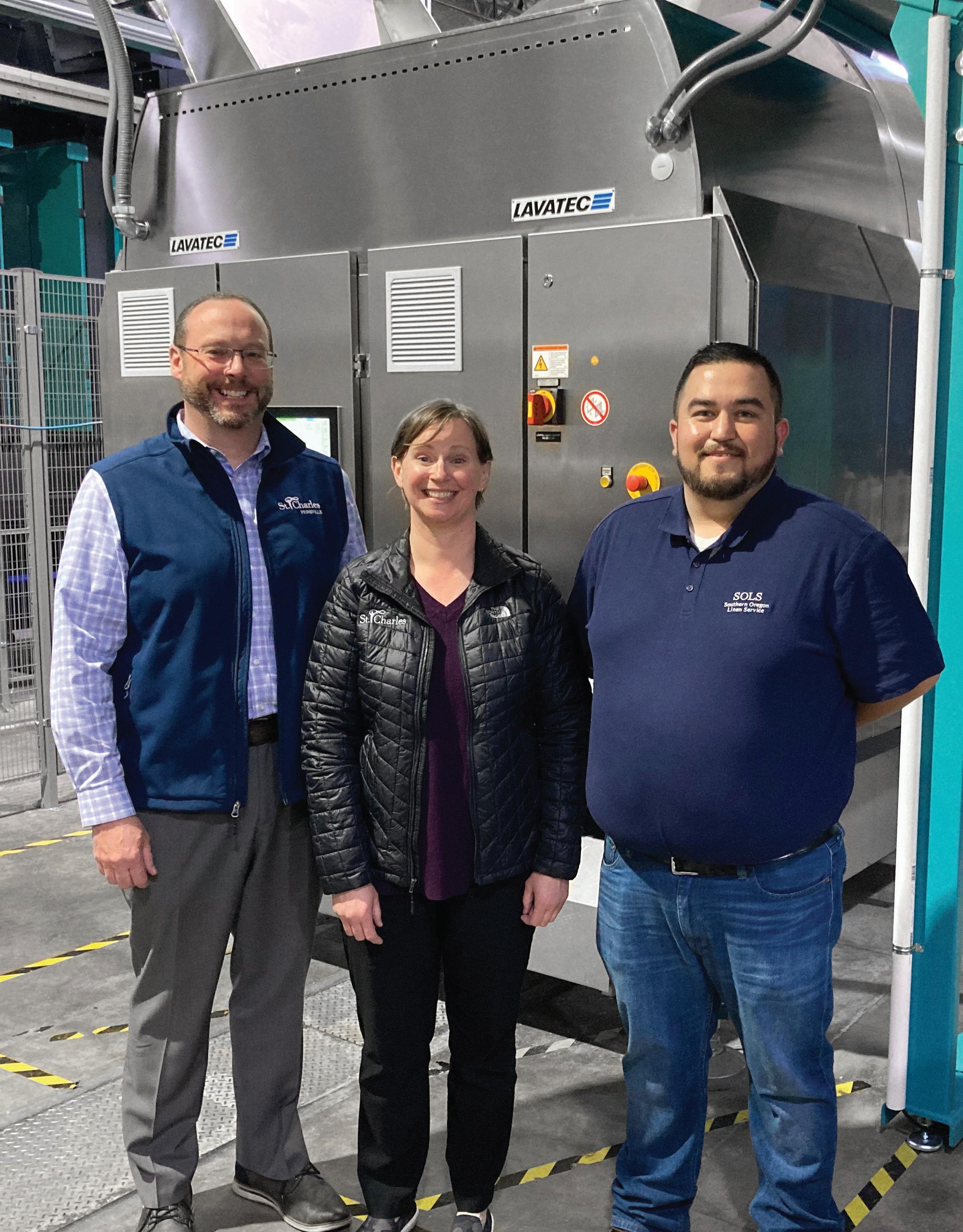



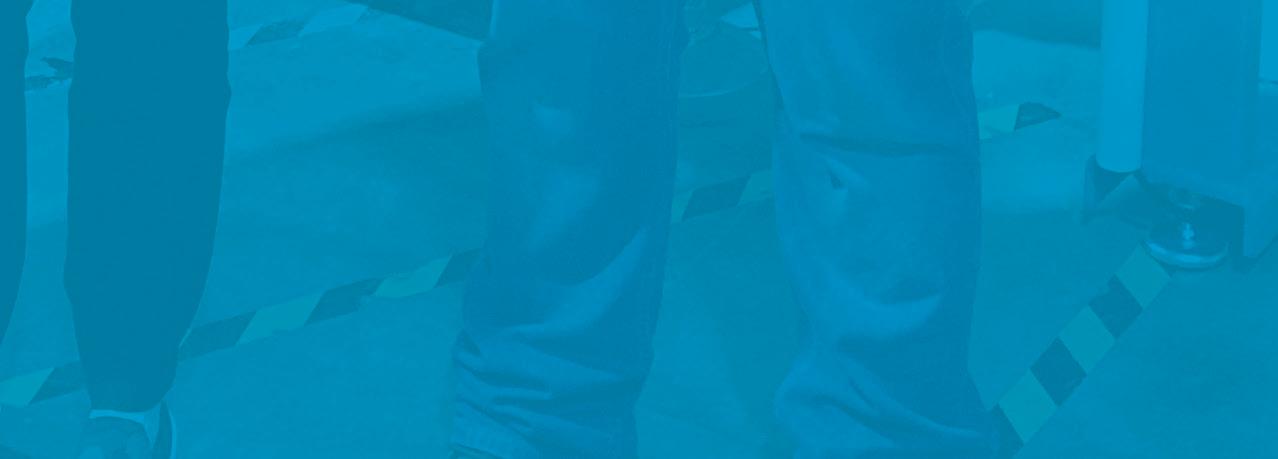
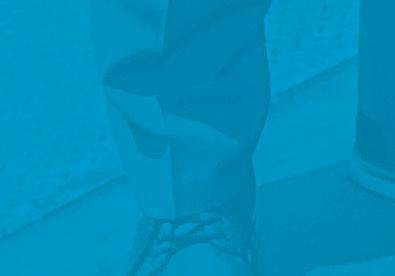



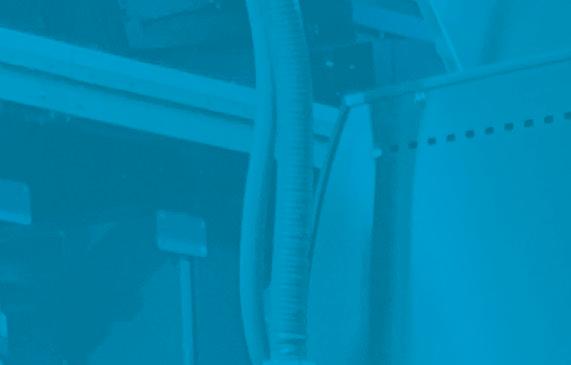
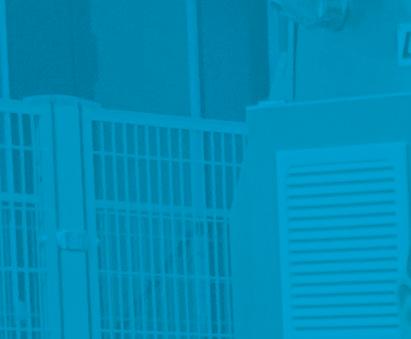

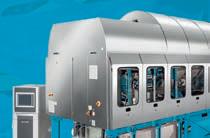
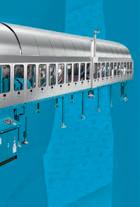










 BY MATT POE, EDITOR
BY MATT POE, EDITOR












































































































































































































































